Although we have visited the Kwa Zulu Natal North Coast many moons ago when we first arrived in South Africa... it had been a really long time. Now we wanted to go back for two specific destinations: the fish traps of Kosi Bay – almost on the border with Mozambique – and the hippo paradise of the St Lucia Wetlands.
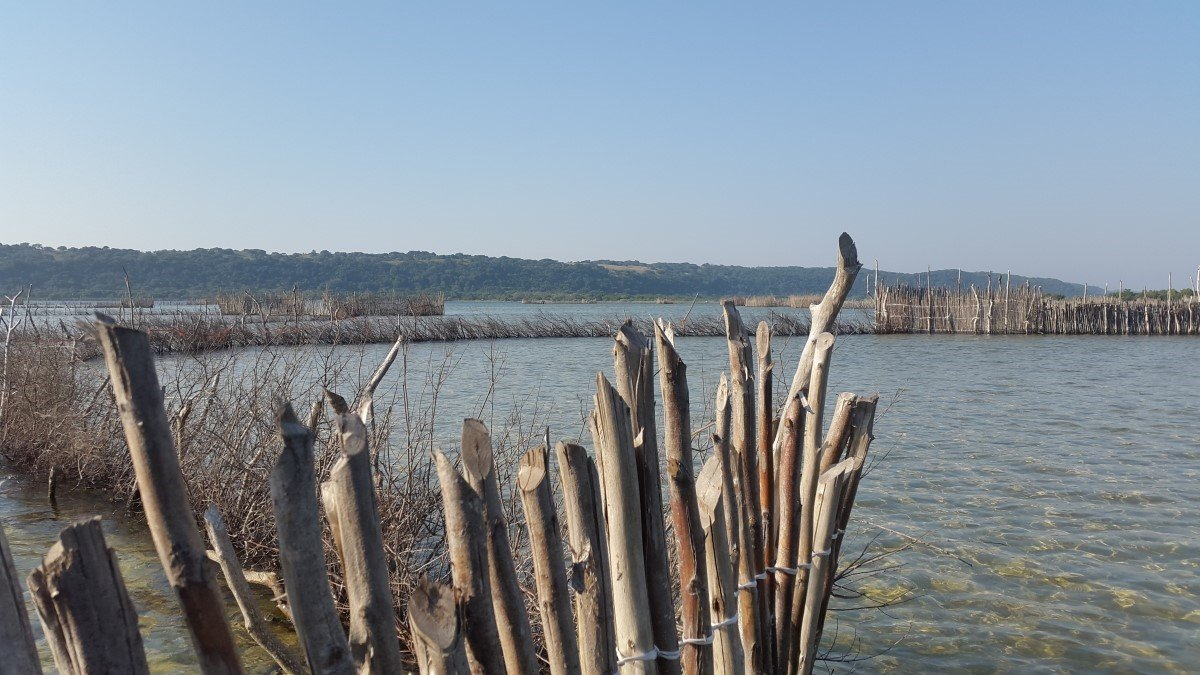
Day 1
Kosi Bay has been on our bucket list for a long time as we are intrigued by the uniqueness of the traditional fish traps used by the local fishermen. The spidery network of fish traps creates unique linear patterns and is visible on Google Earth. We’ve seen pictures and read about it, so yes …. eventually the opportunity popped up to see with our own eyes.
Kosi Bay is part of the iSimangaliso Wetlands , a Unesco World Heritage site, close to the Mozambican border, and is about a 5 hr drive from Durban. It's an estuary system comprising four lakes linked by a network of channels. Our accommodation for the night was situated on the main, big lake which is hippo world but the fish traps are set up on the smaller lakes , more north, closer to the estuary.
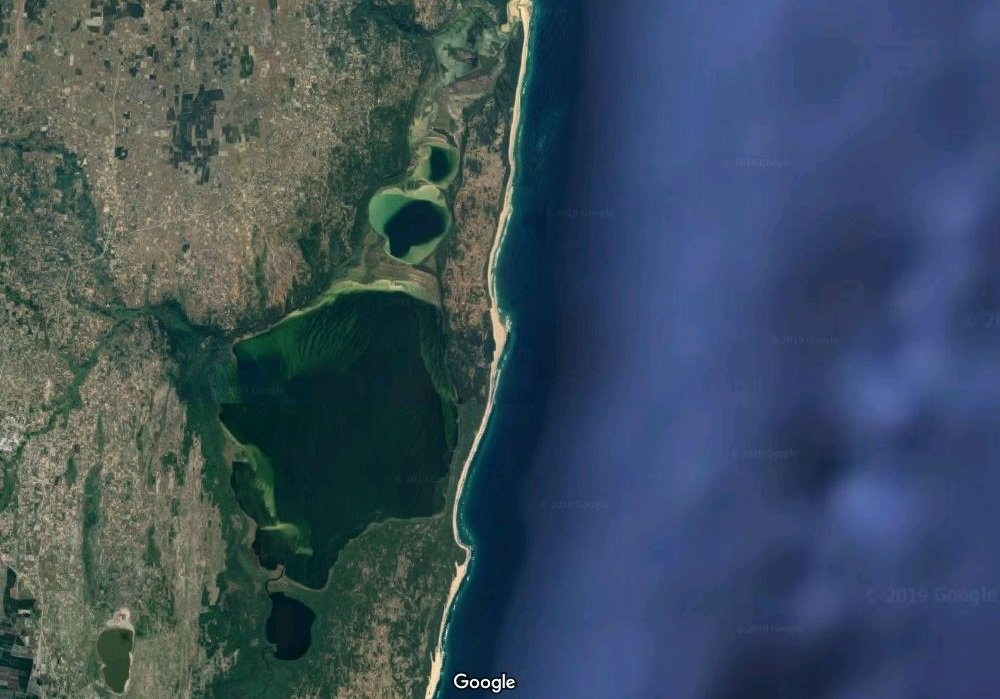
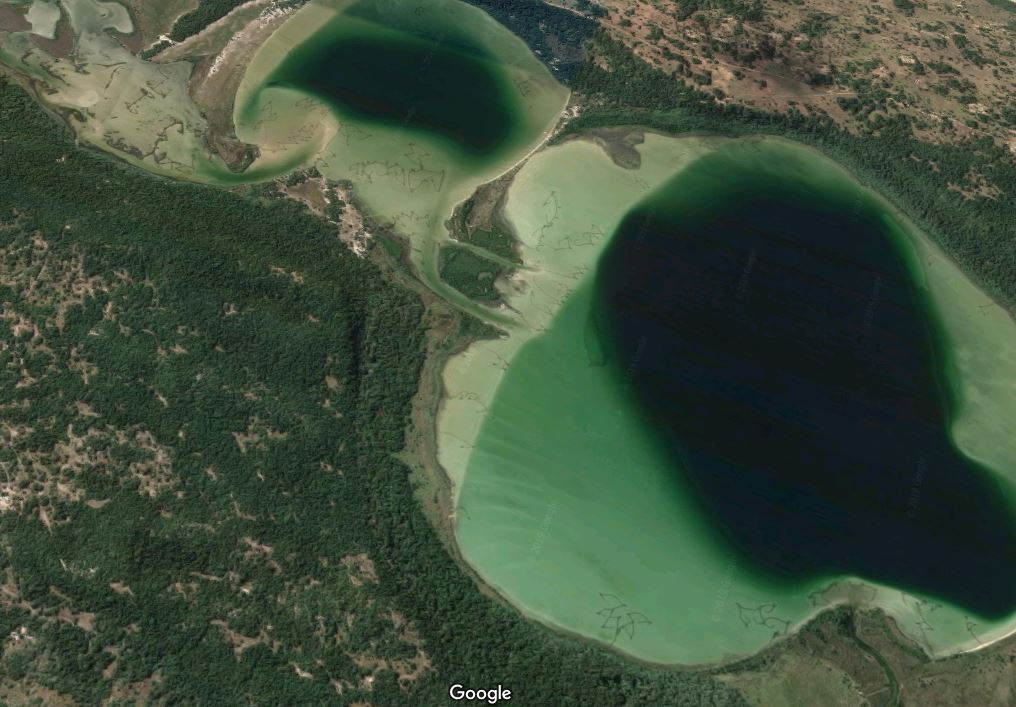
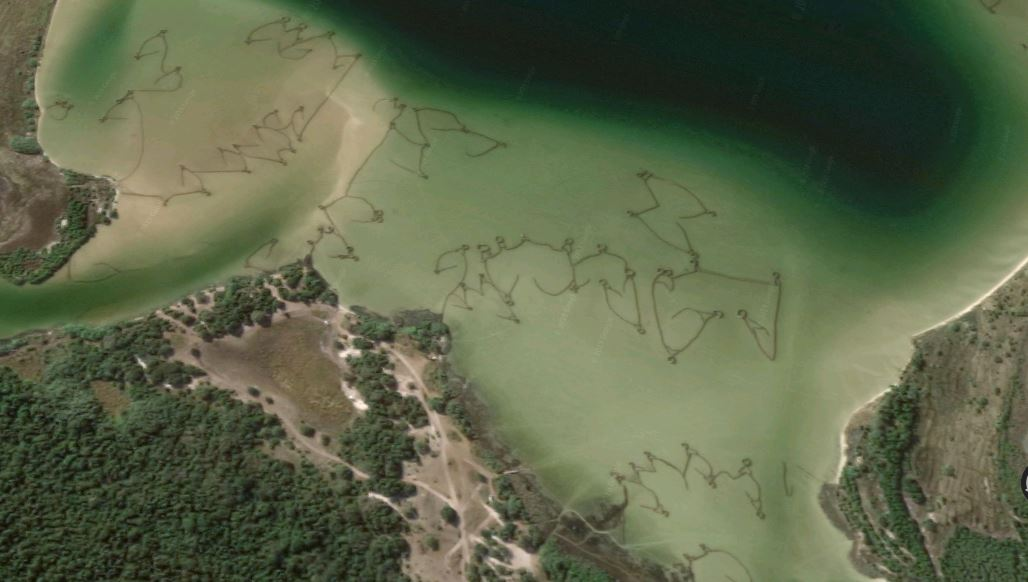
Making the most of the last hour before sunset, we went for a short evening stroll to the lake.
Our host told us that the path to the lake was considered a “hippo highway”, and I was slightly skittish for every little noise coming from the surrounding bush, keeping in mind that the hippos would outrun me easily and although they’re vegetarian, they kill more people than sharks or lions!
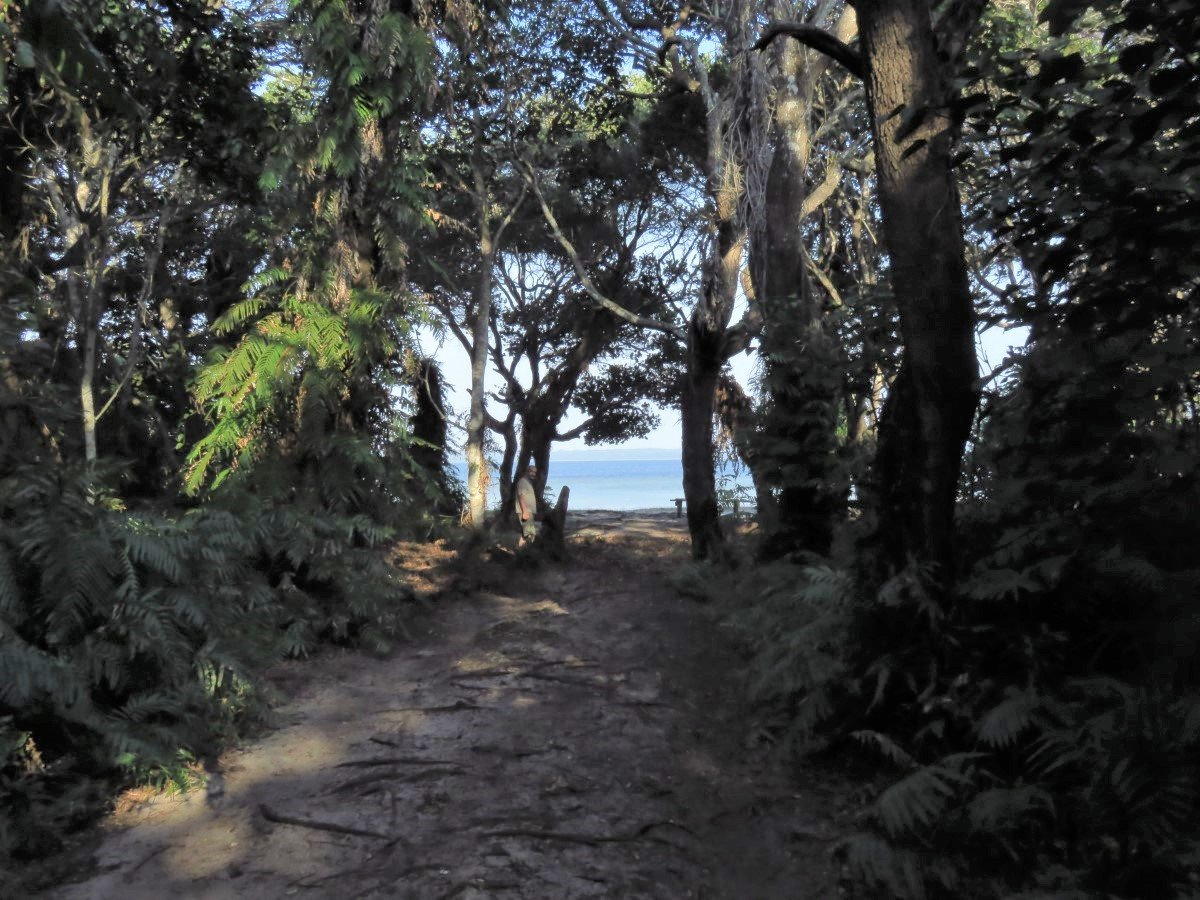
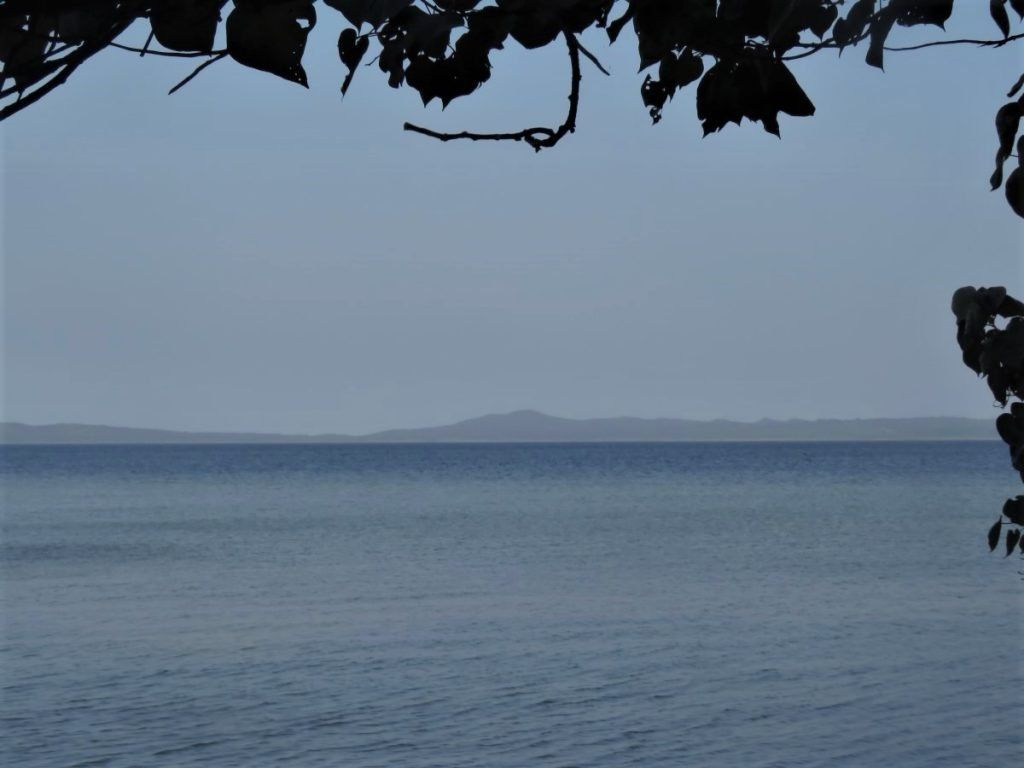
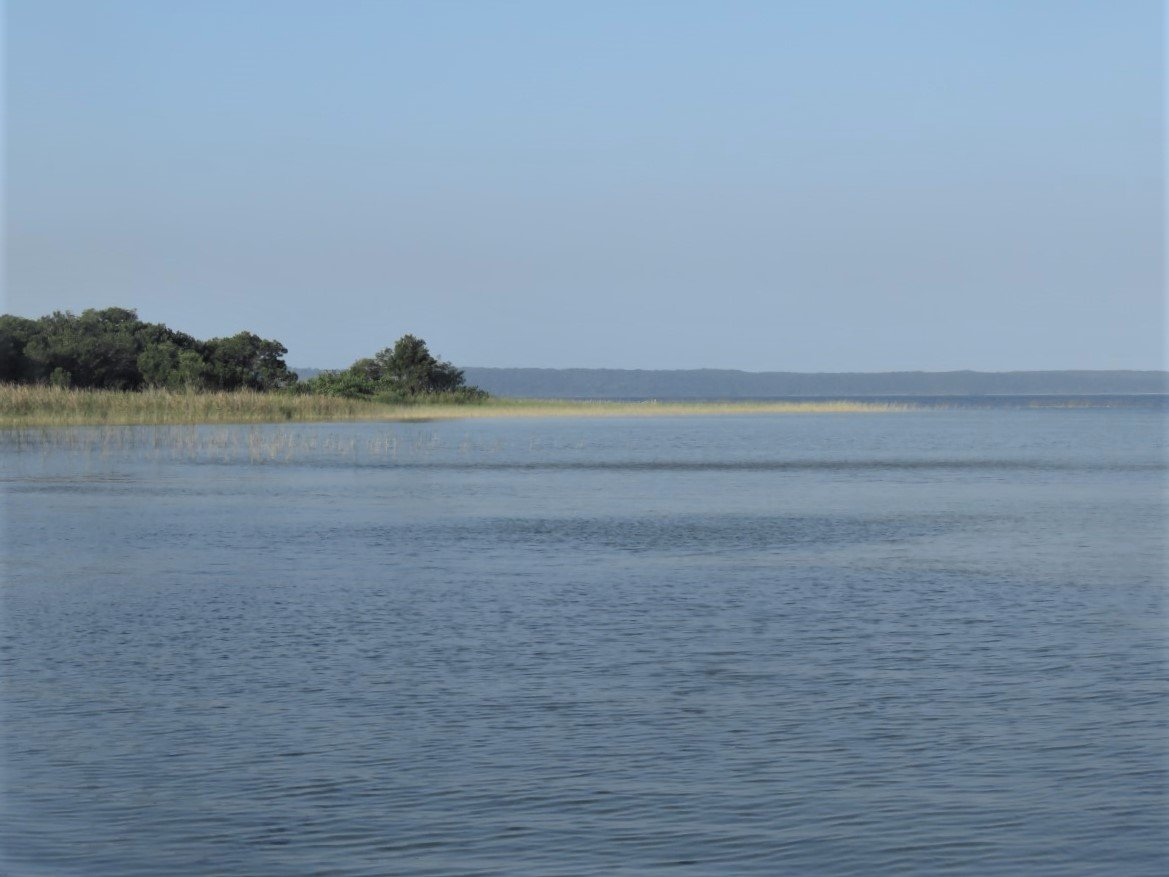
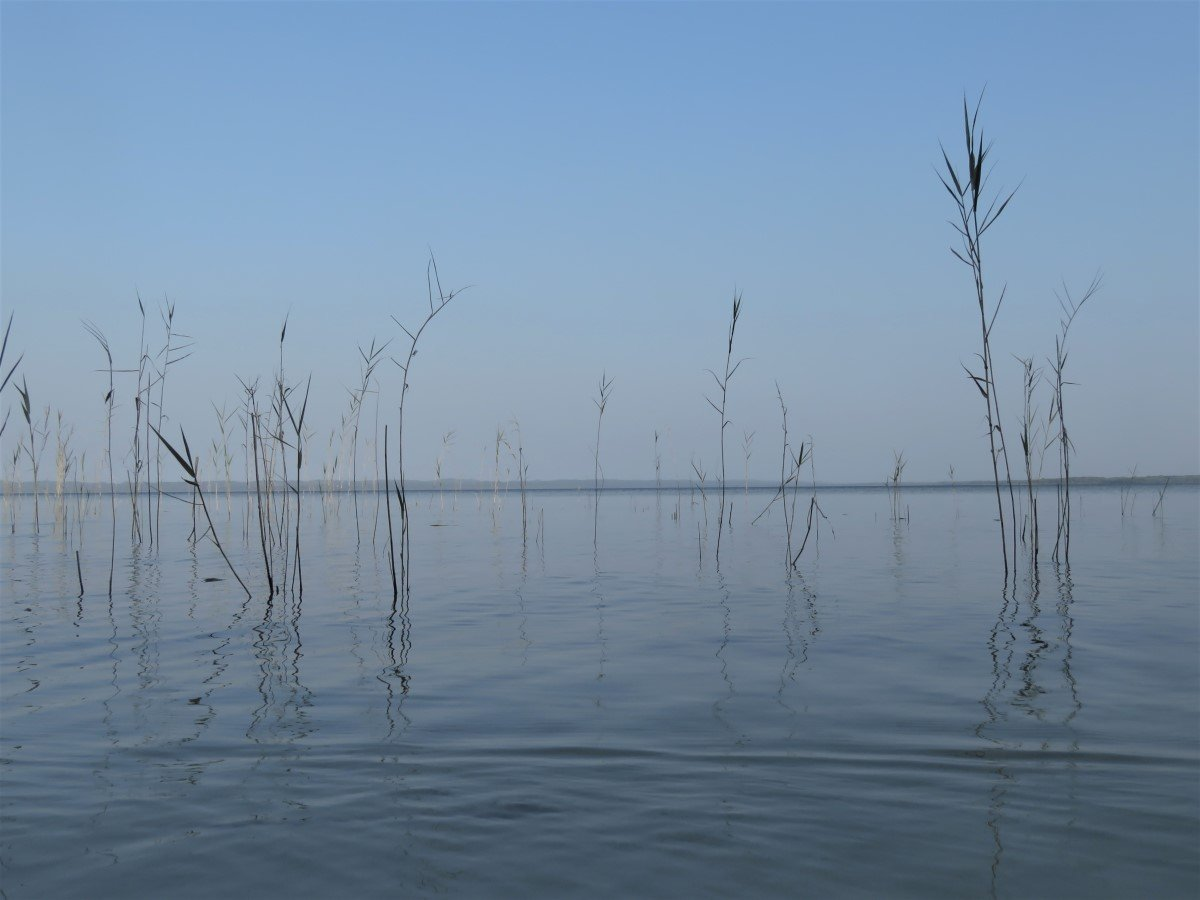
I breathed a sigh of relief when we saw a lonesome fishermen sitting at the edge of the lake with their boat bobbing in the water, so I felt much better … if they felt safe, it would be safe enough for us.
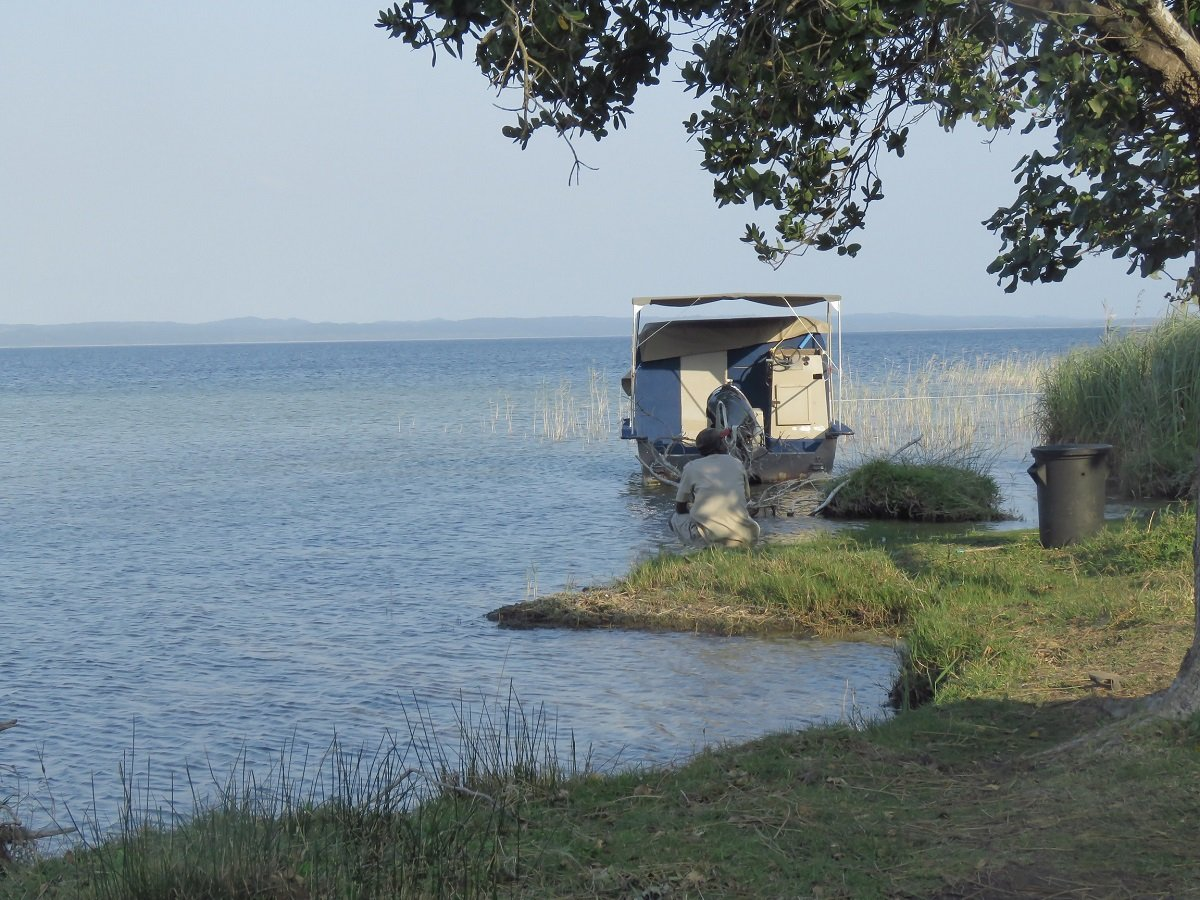
We walked for a while along the shoreline and were fascinated by the hippo footprints visible in the sand under the water.
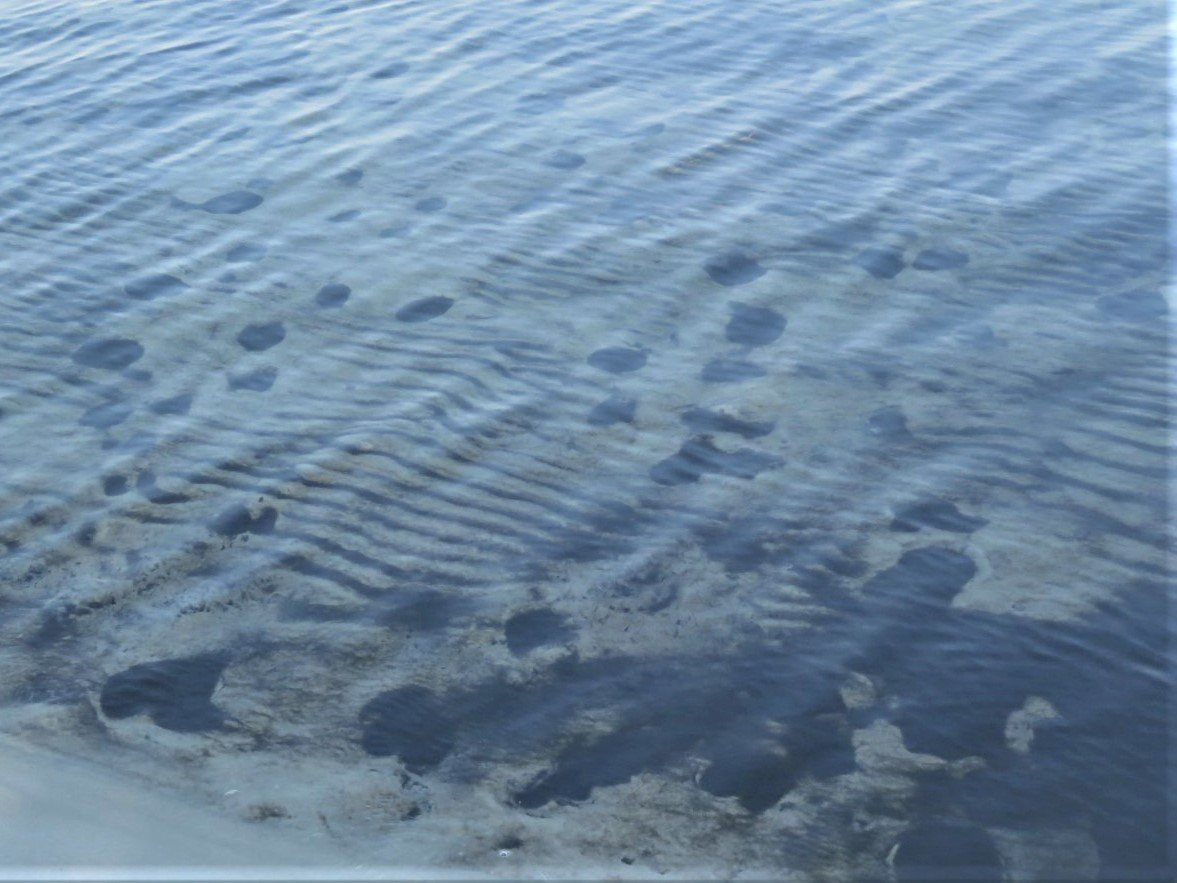
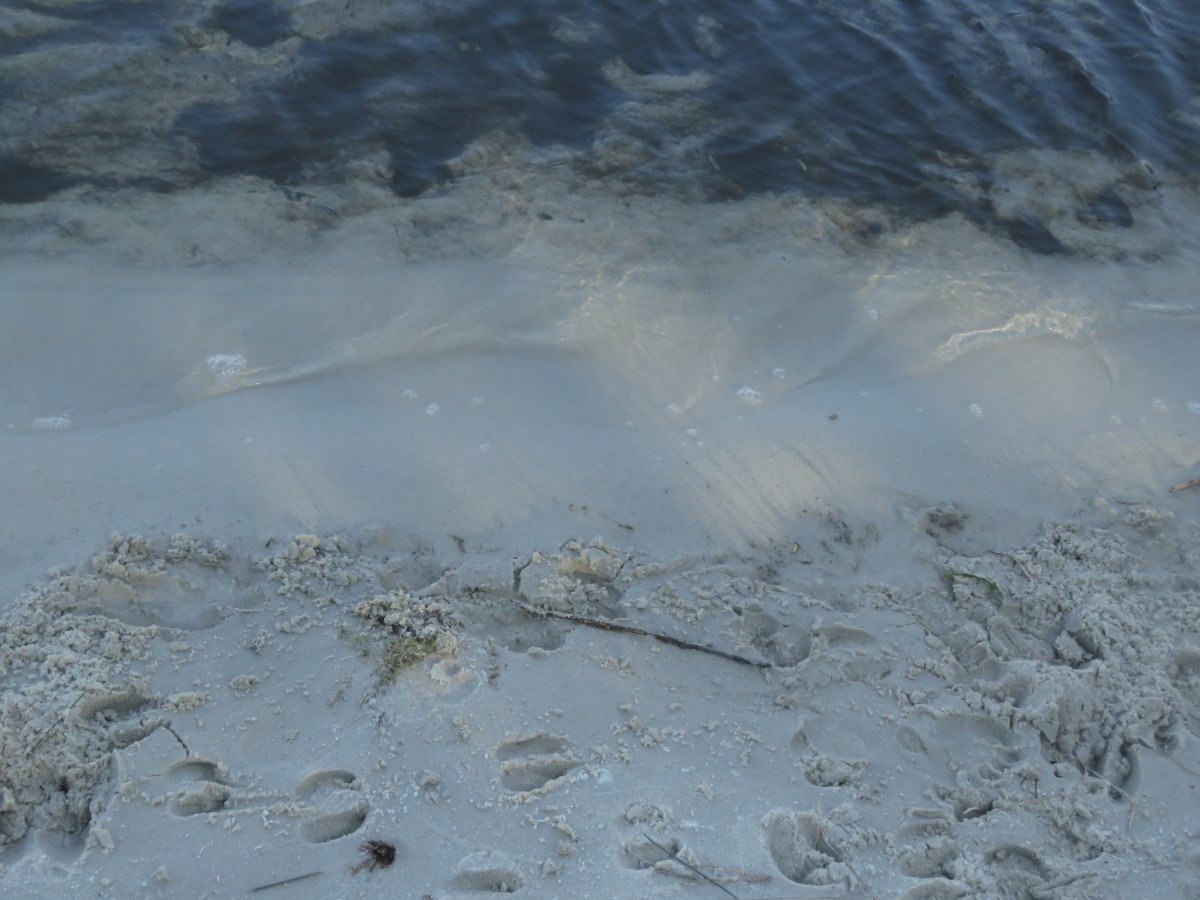
The sandy edge of the lake and the path back to the lodge was criss-crossed by a myriad of different spoor of creepy crawlies making their way in the bush and leaving their unique signatures in the sand.
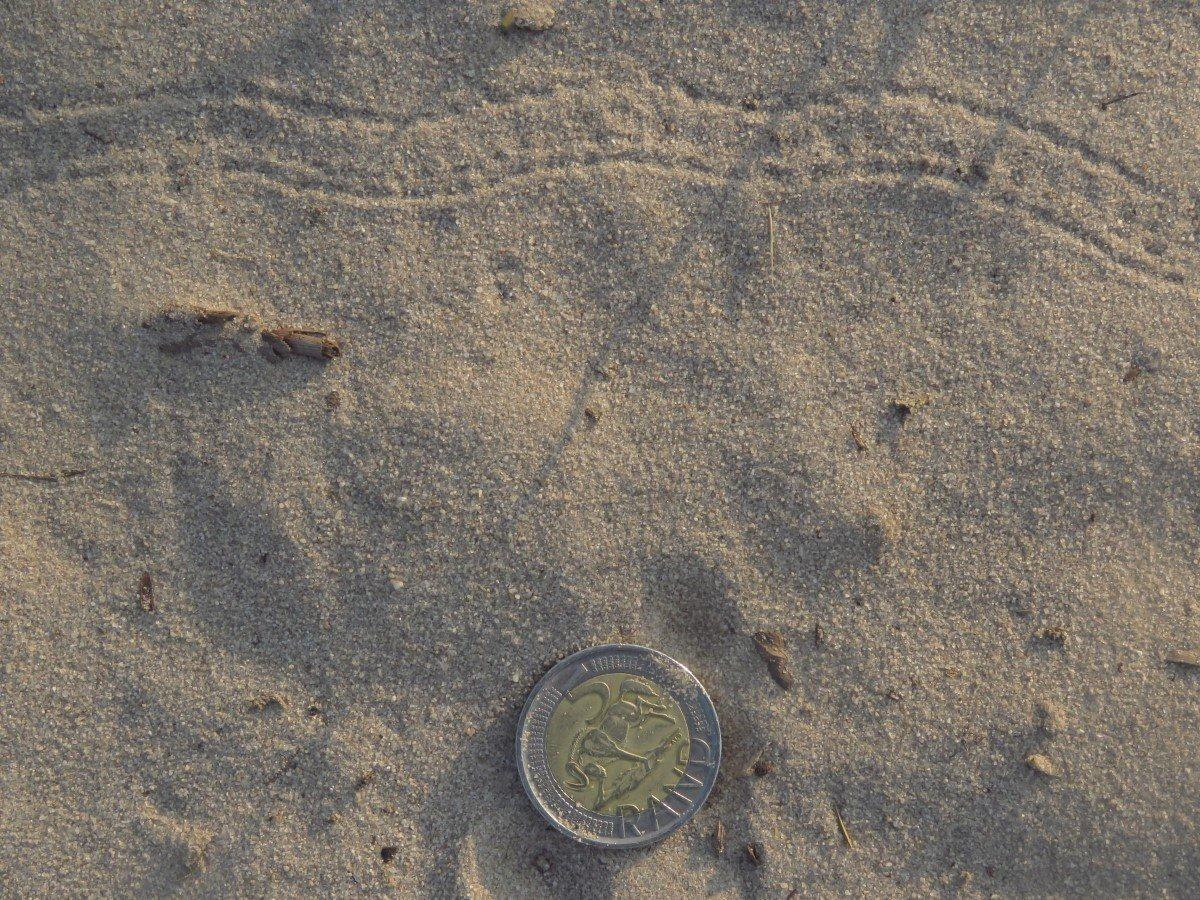
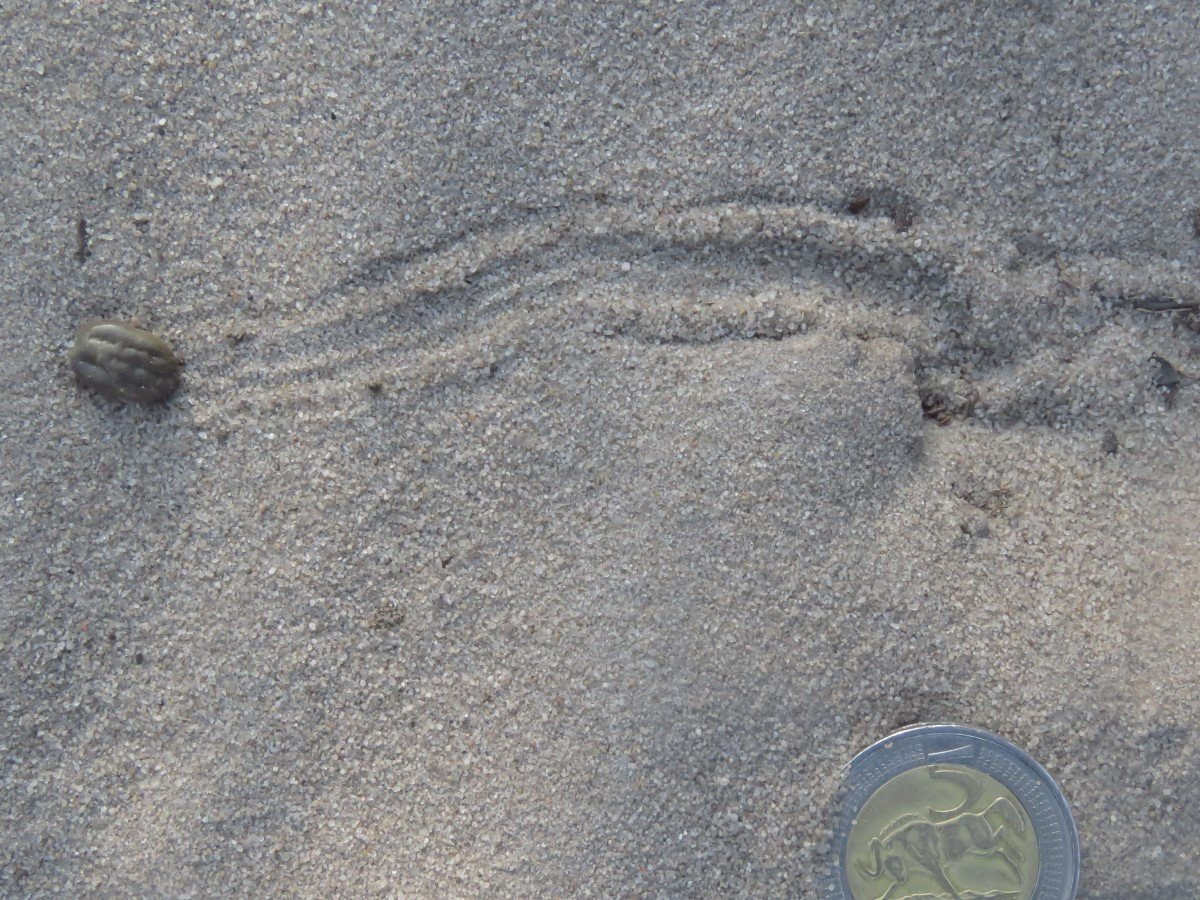
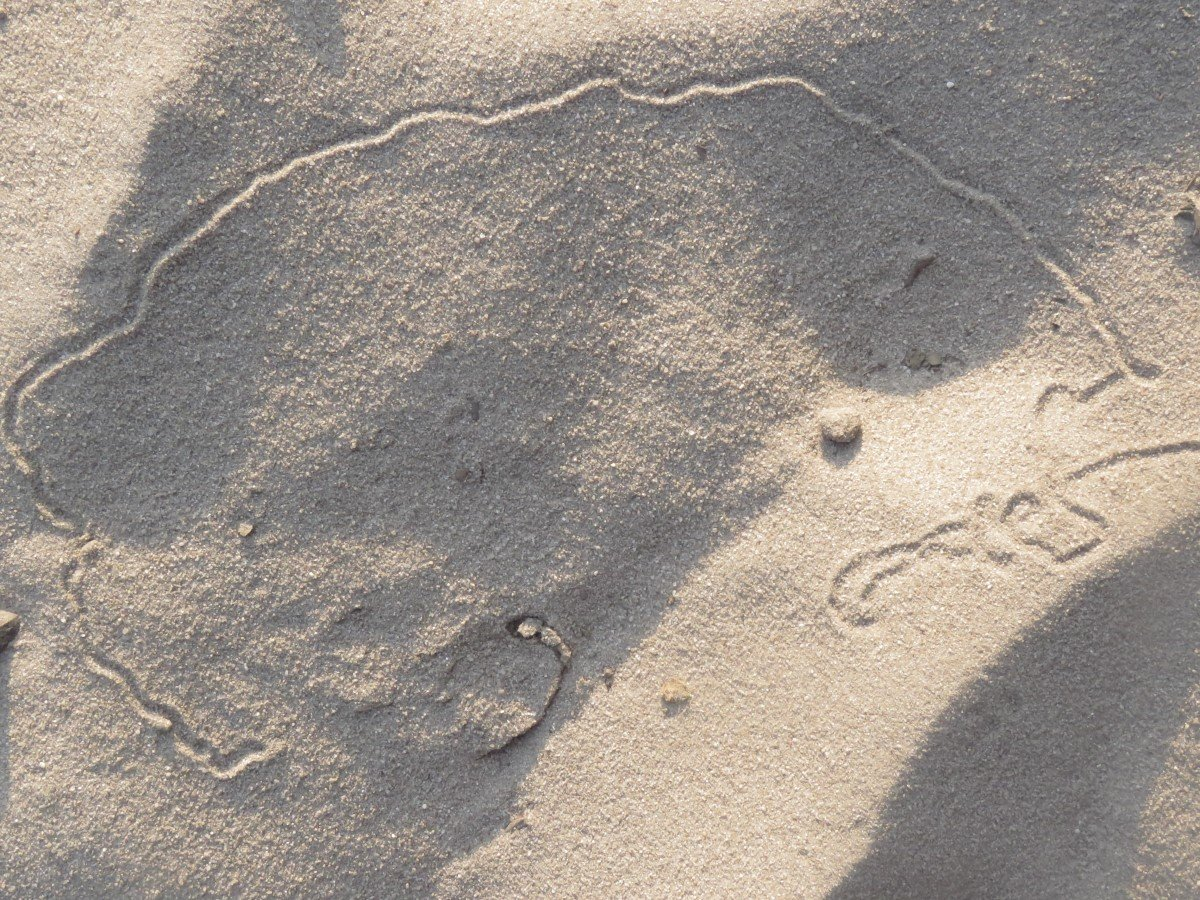
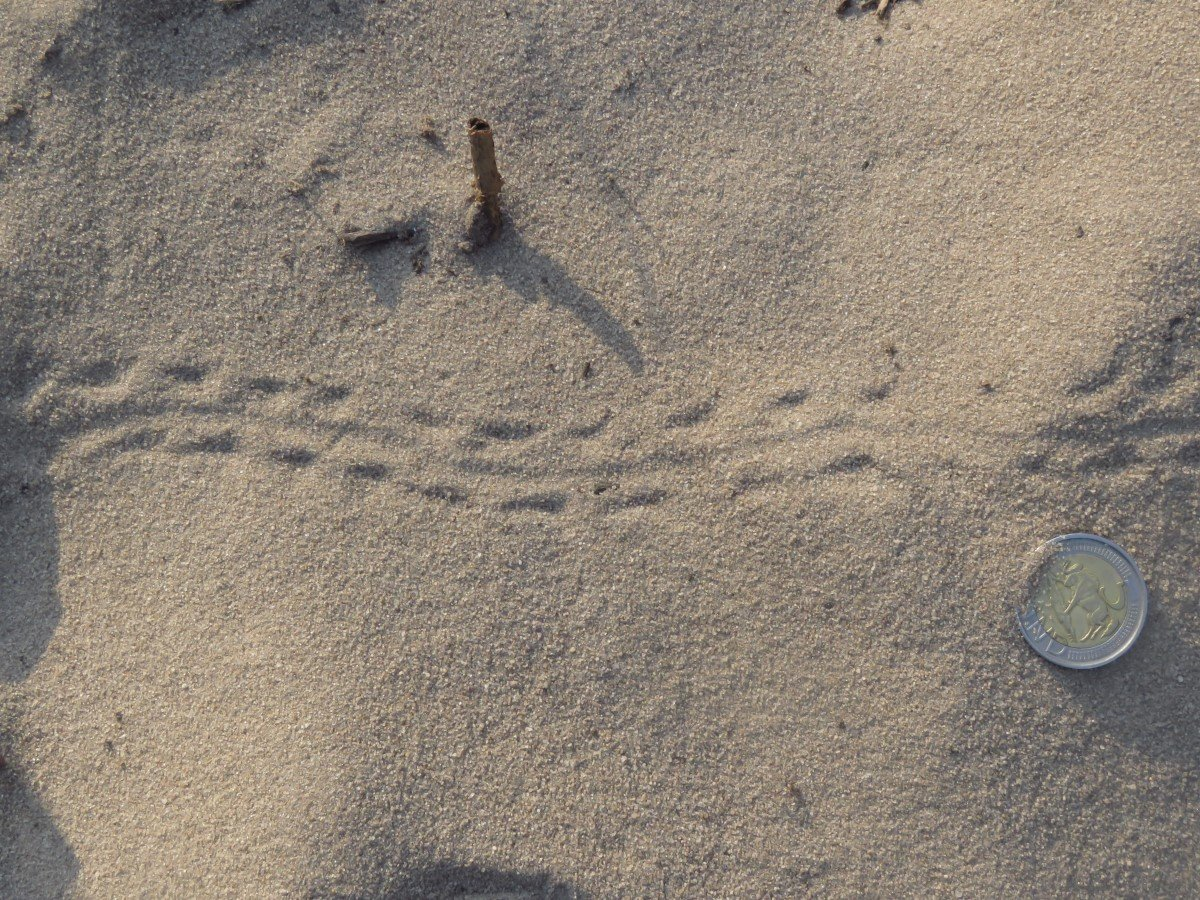
The lake was silent. Just a soft breeze rippled the surface of the water but even the grasses didn’t stir. Being close to dusk even the daytime noises of animal life had ceased and quietness had descended over he bush.
Day 2
Kosie Bay is famed for the traditional woven fish traps and palisade kraals used by the community for well over 700 years. The next morning we got us a local guide who took us to one of the smaller lakes up north to see the fish traps.
We bounced along on a bushy path until we reached one of the many spots where the fishermen have their little “workshops” to make the traps right there and then where they need them. In one of these improvised workshops we saw work on the fish traps in progress. A pile of fish scales was testimony to the efficacy of the traps.
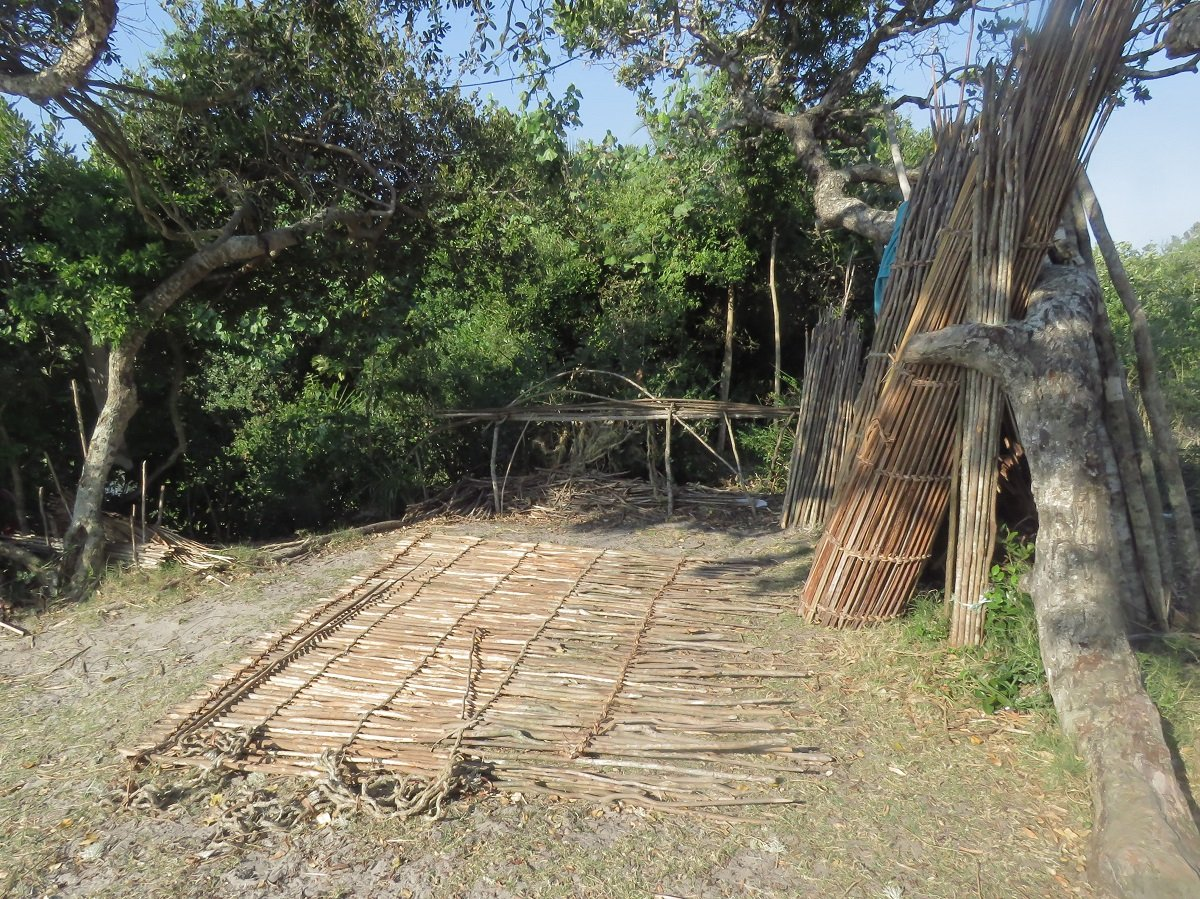
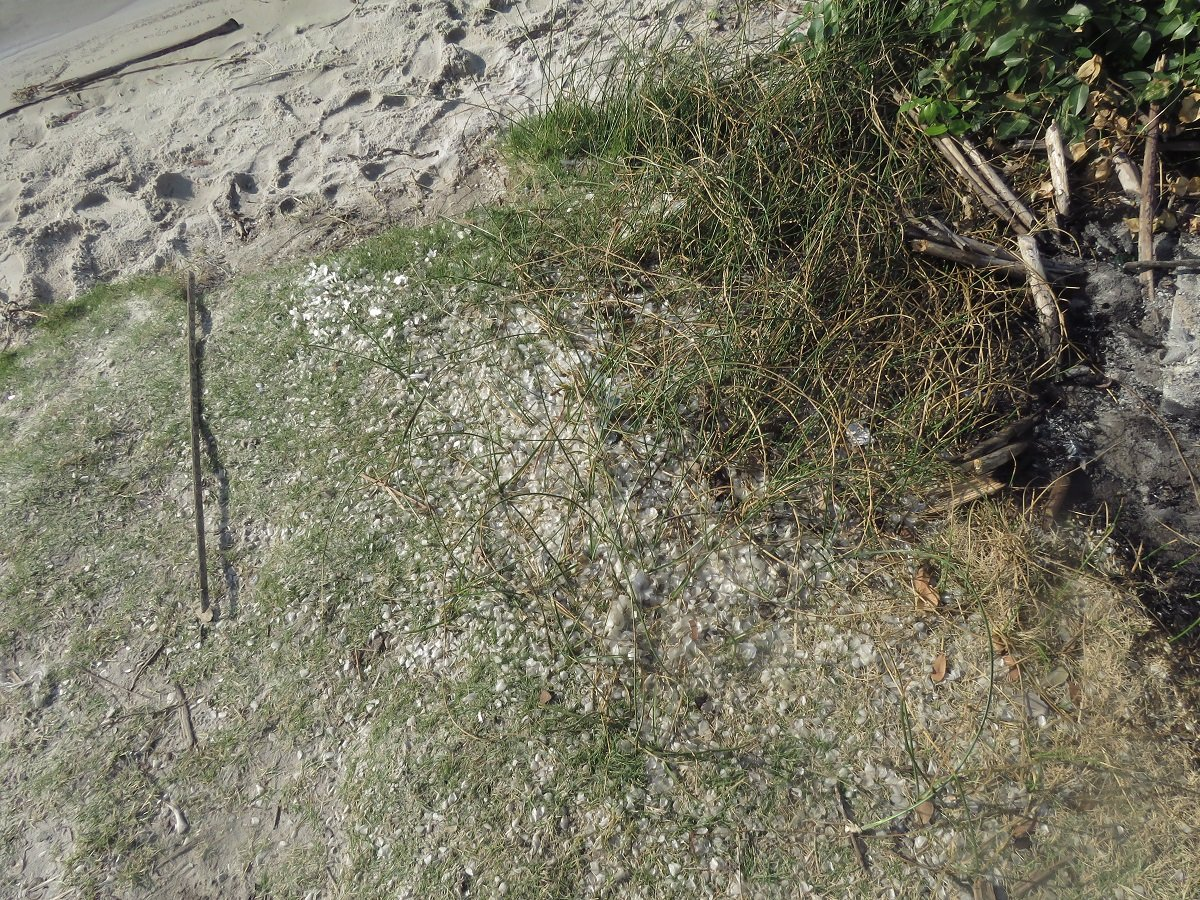
As we had brought only one pair of shorts between the two of us (being winter I had not anticipated to get into the water) we took turns to walk out into the shallow waters to have a closer look at the fish traps. Ingenious to say the least.
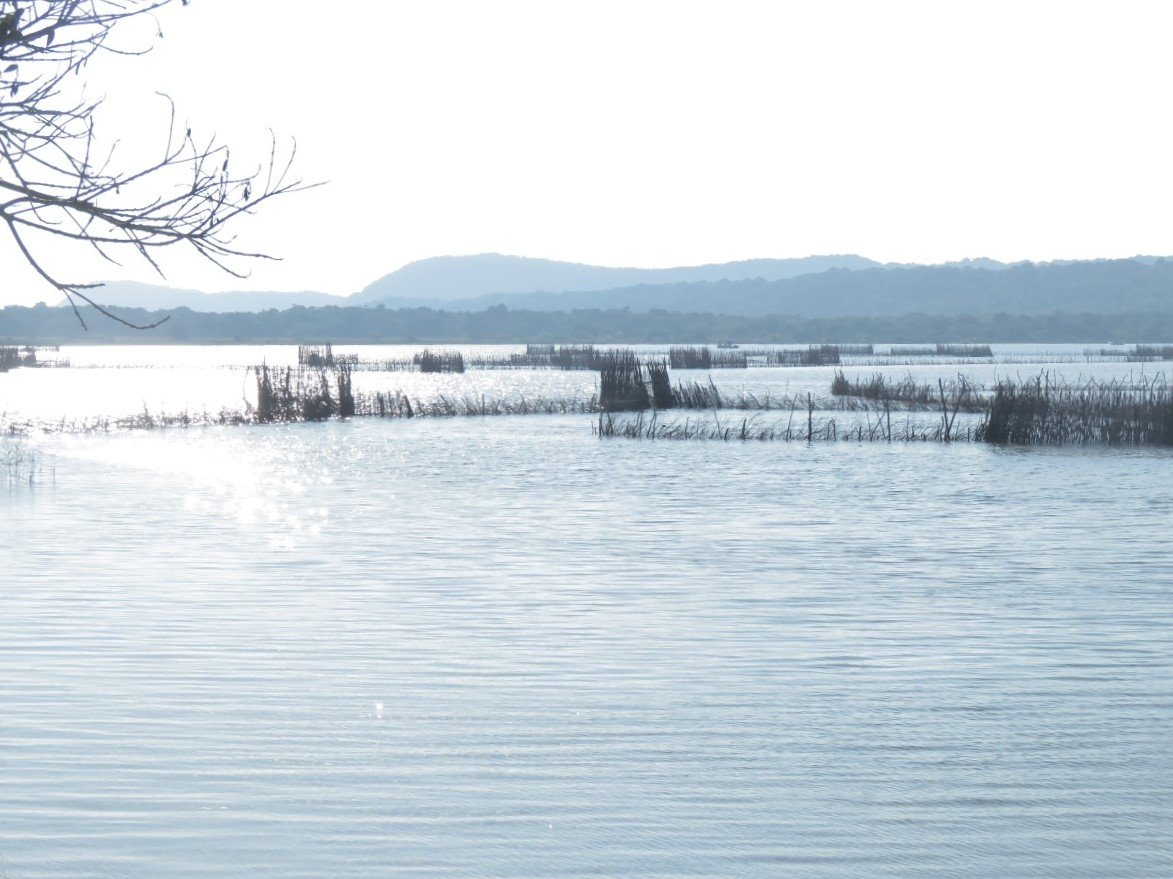
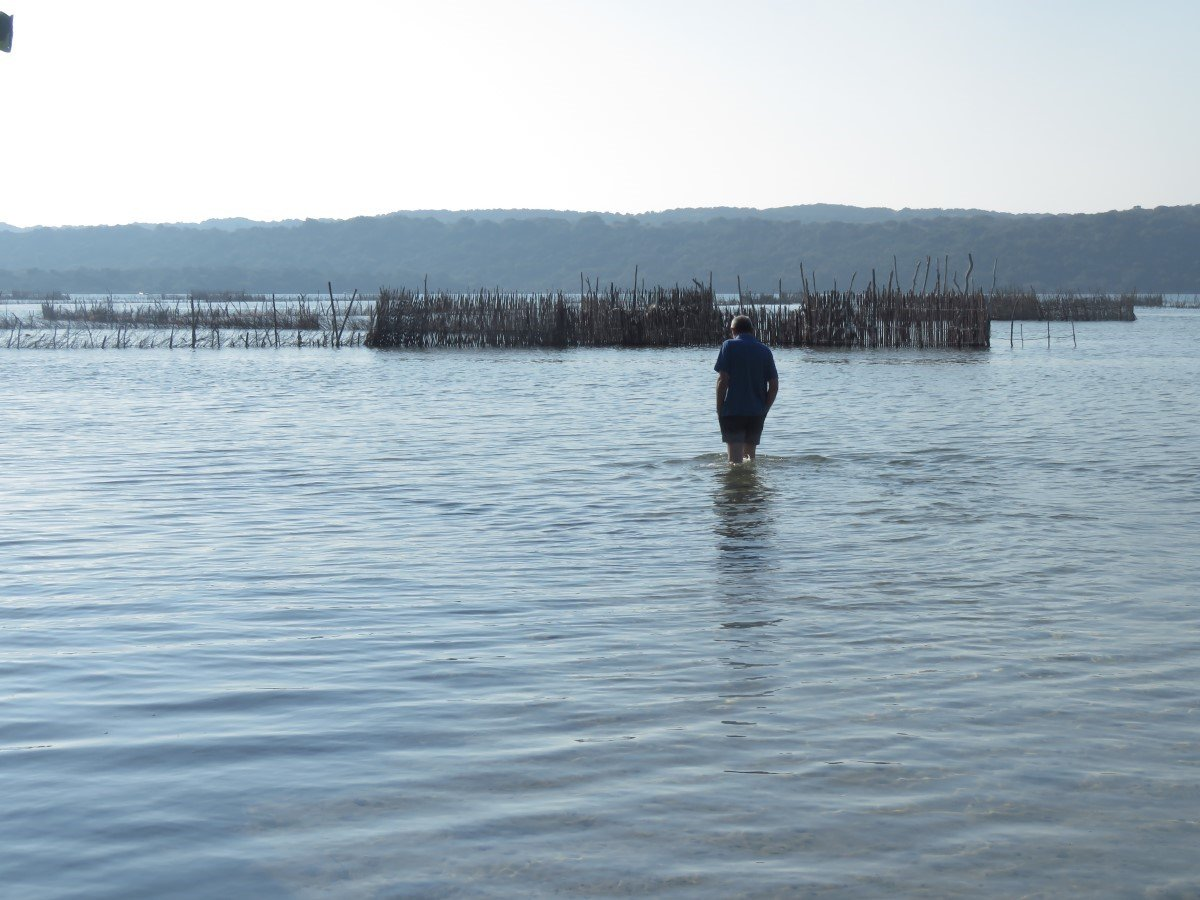
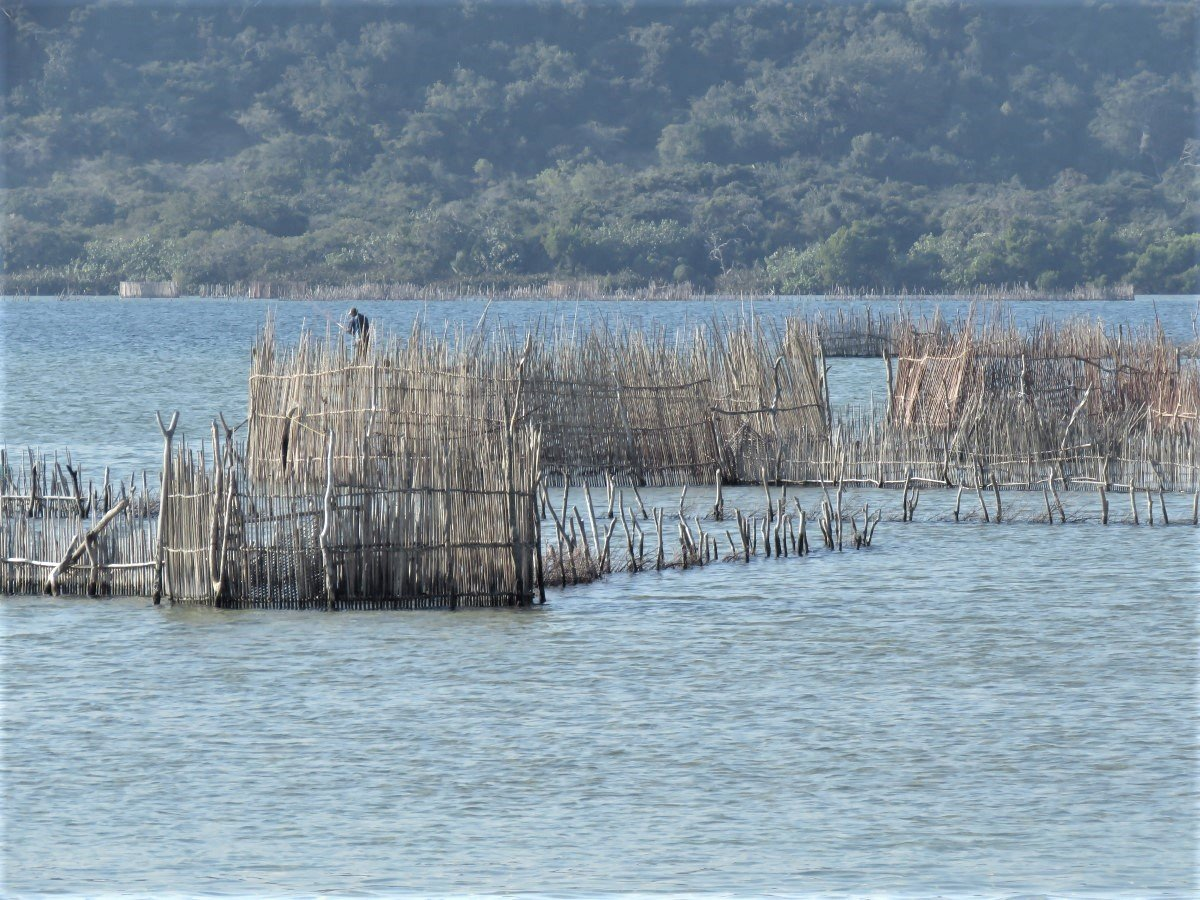
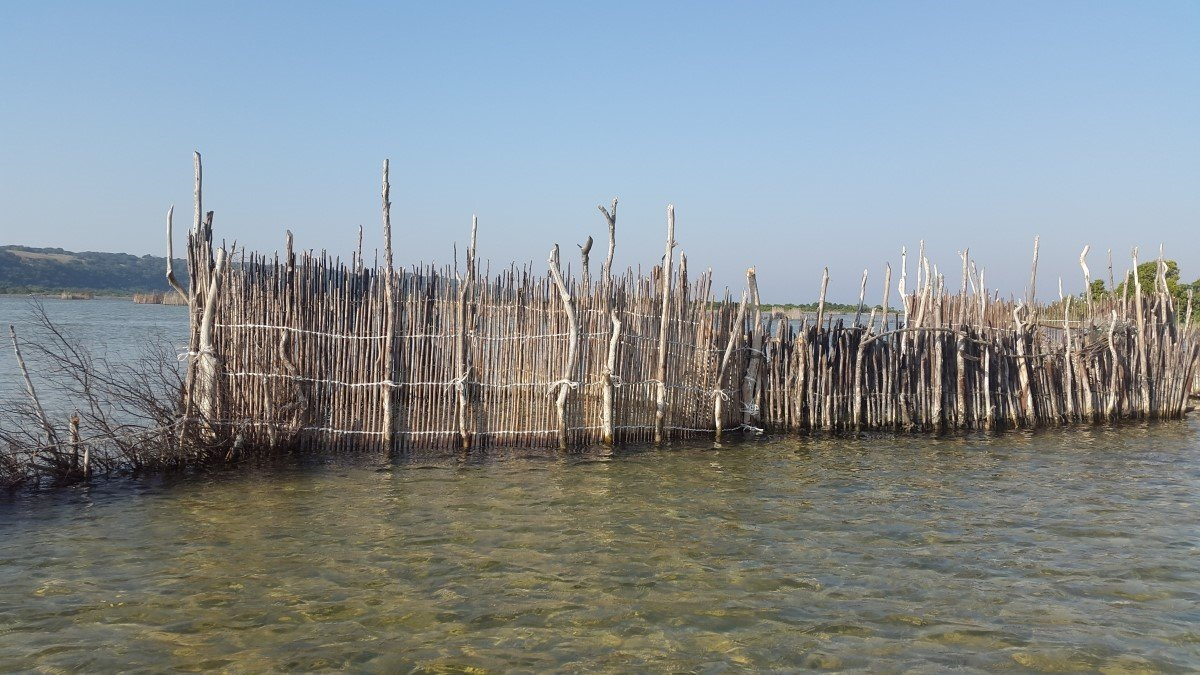
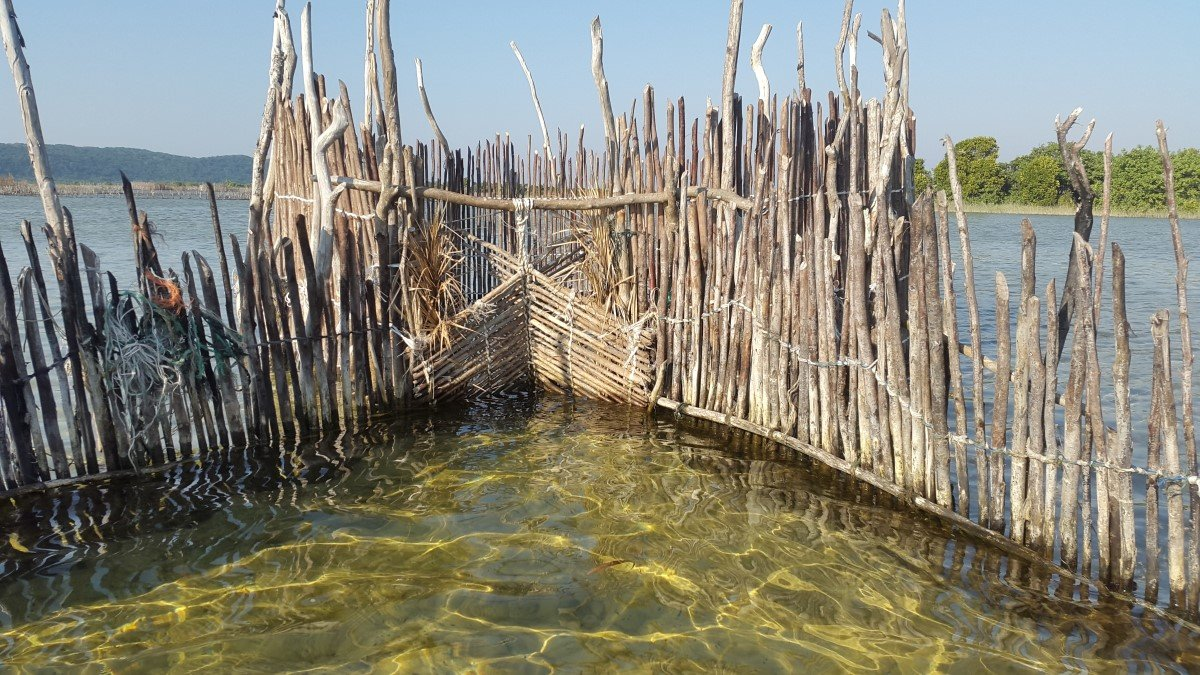
Our (very) short visit unfortunately didn’t allow us to take the time to visit the famed Raffia Palm Forest or sit around in the hope of seeing the African Fish Eagle.
We will go back to Kosi Bay, but maybe in another season so that we can also see the Loggerhead and Leatherback Turtles come onto the beach to lay their eggs.
Shortly after lunch we left Kosi Bay en route to Lake St Lucia.
Passing through one of the smaller villages we couldn’t but smile at some very typical South African sights: hairdressers along the roadside, cattle using the road as if it belongs to them and – closer to St Lucia – the signs warning for crossing hippos.
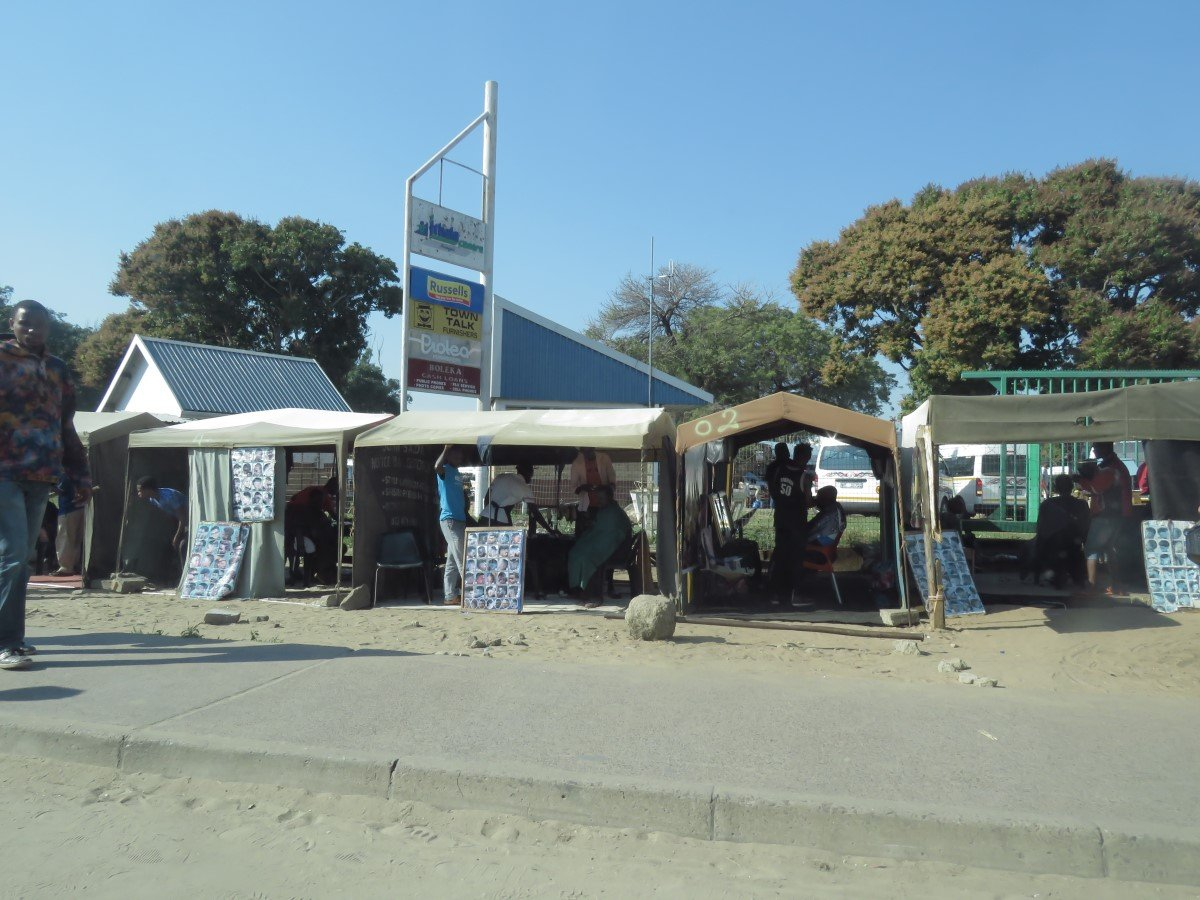
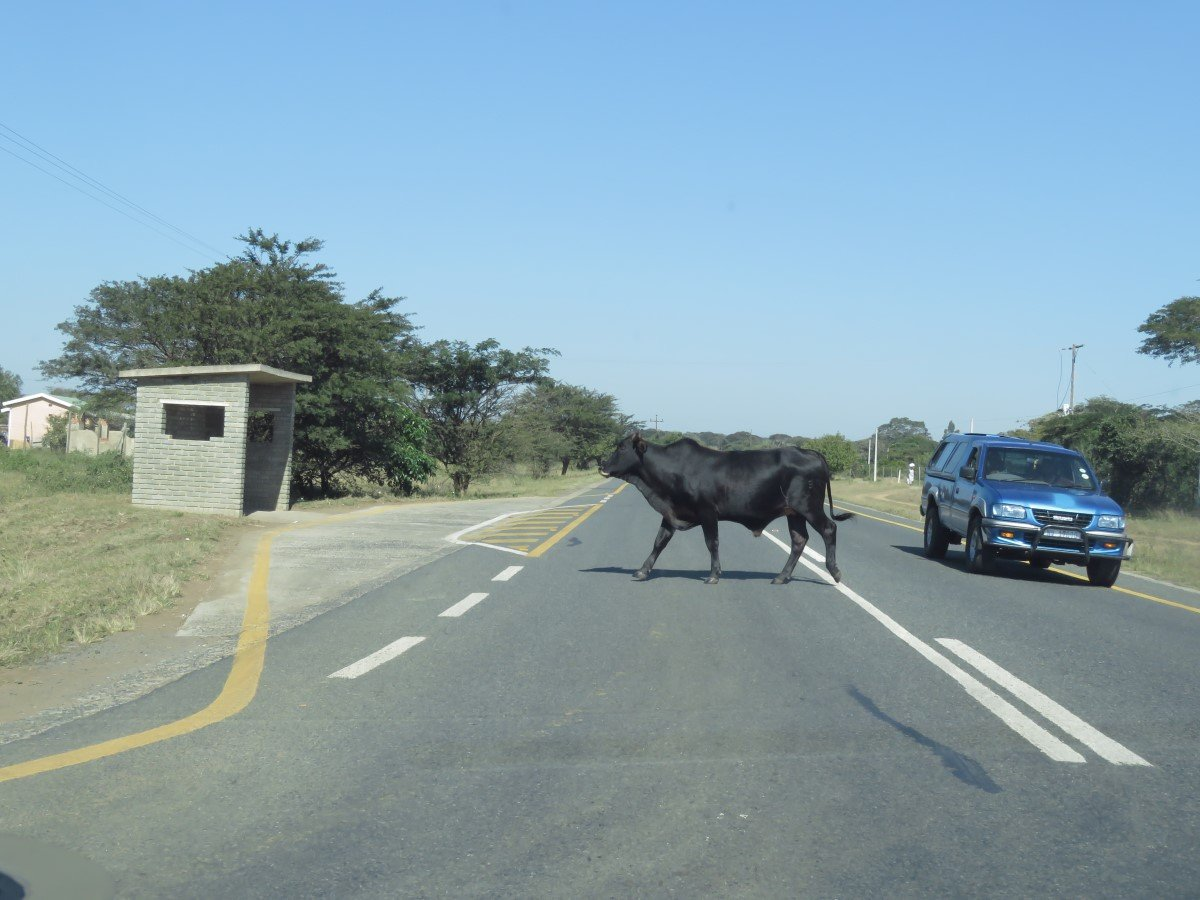
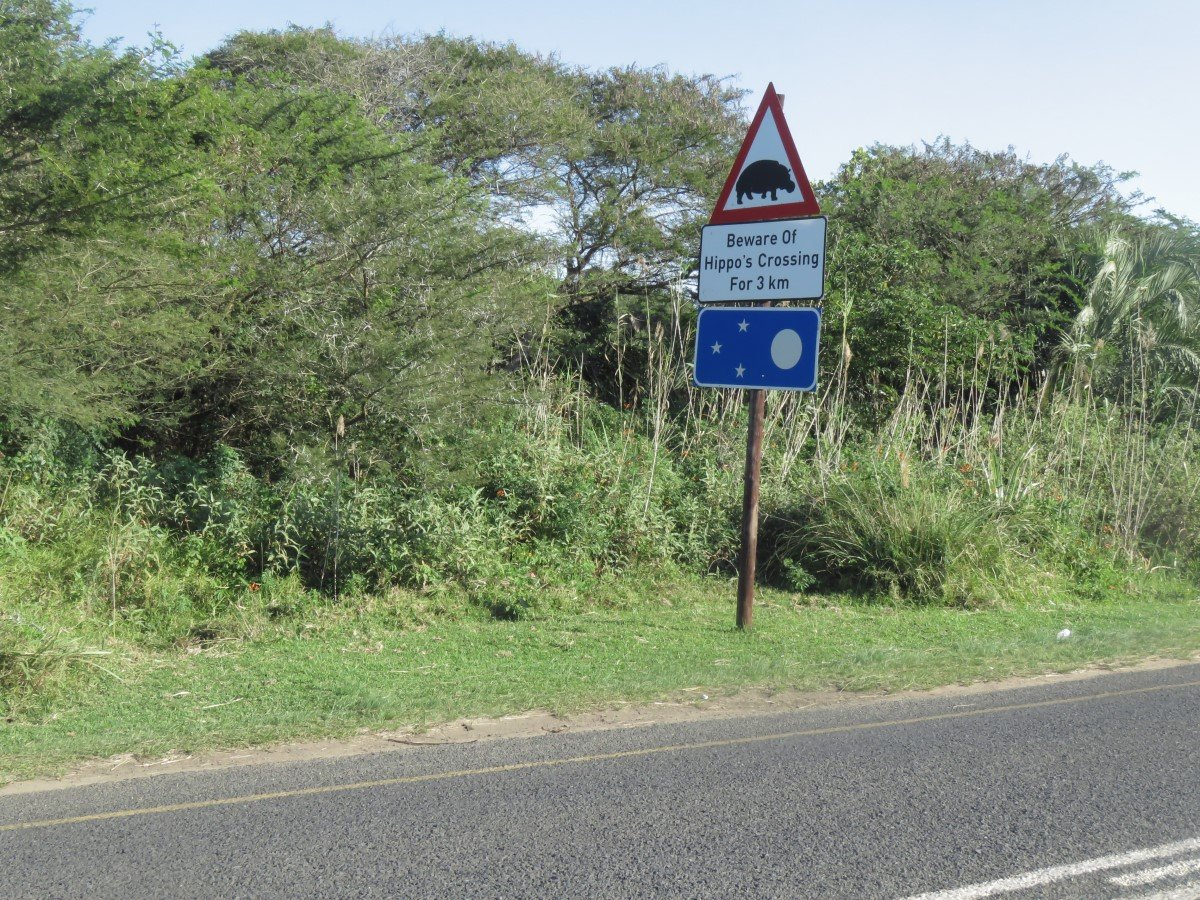
After booking in at our b&b, we signed up for a boat ride the next morning and while still light, we took a leisurely stroll to the river to get our first glance of the hippos. We’ve seen them in the past, but very few and usually that far away that the only thing you could see is a blob of a different shade of brown in a brown river!
At Lake St Lucia they thrive and when we reached the river we could see a little family having boisterous fun in the water.
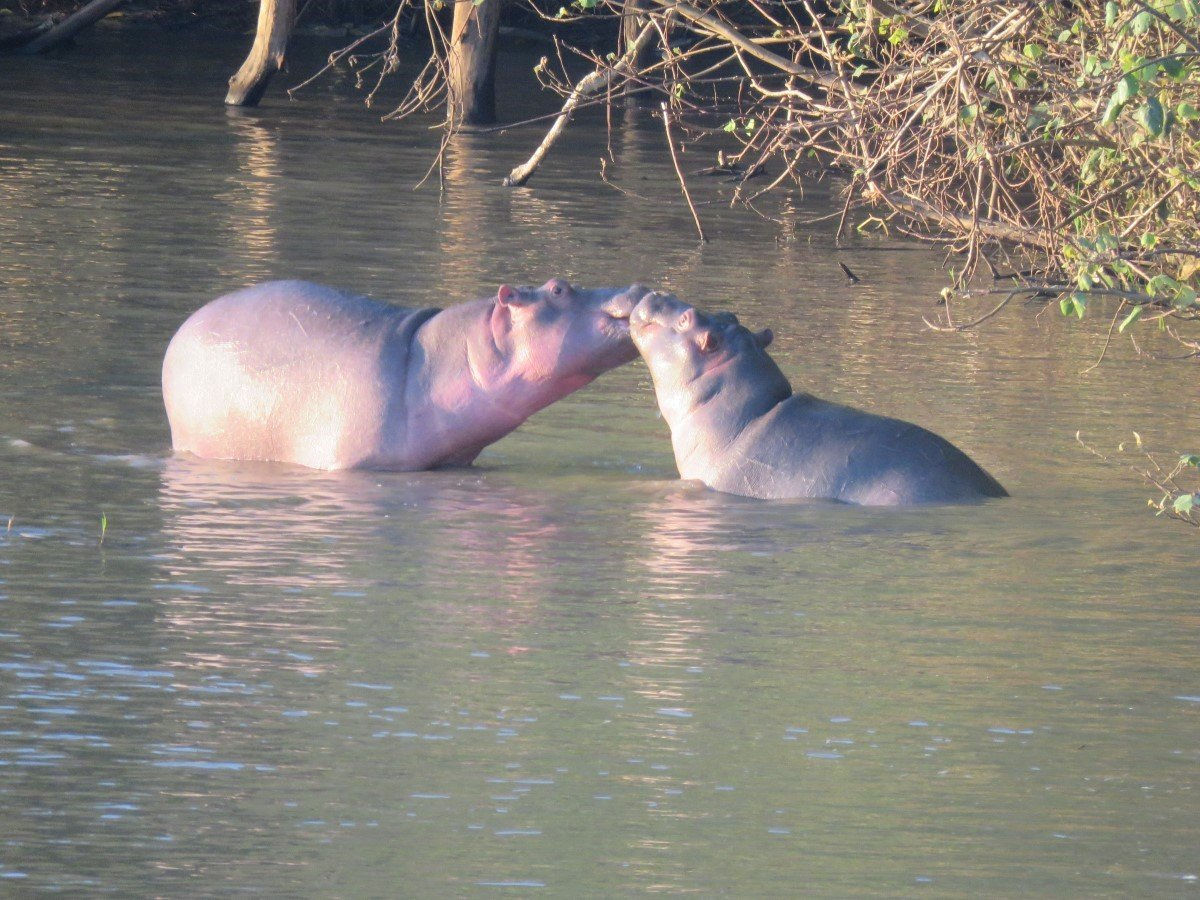
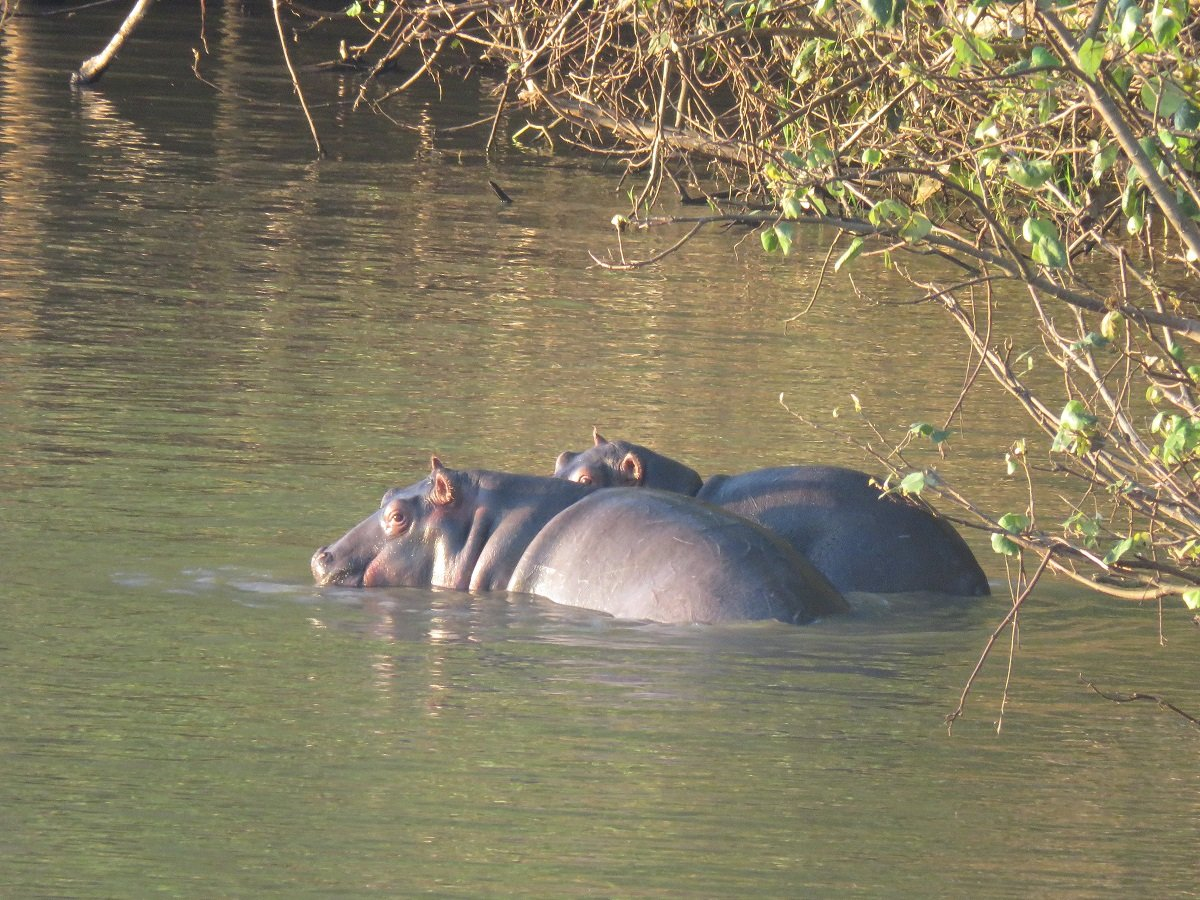
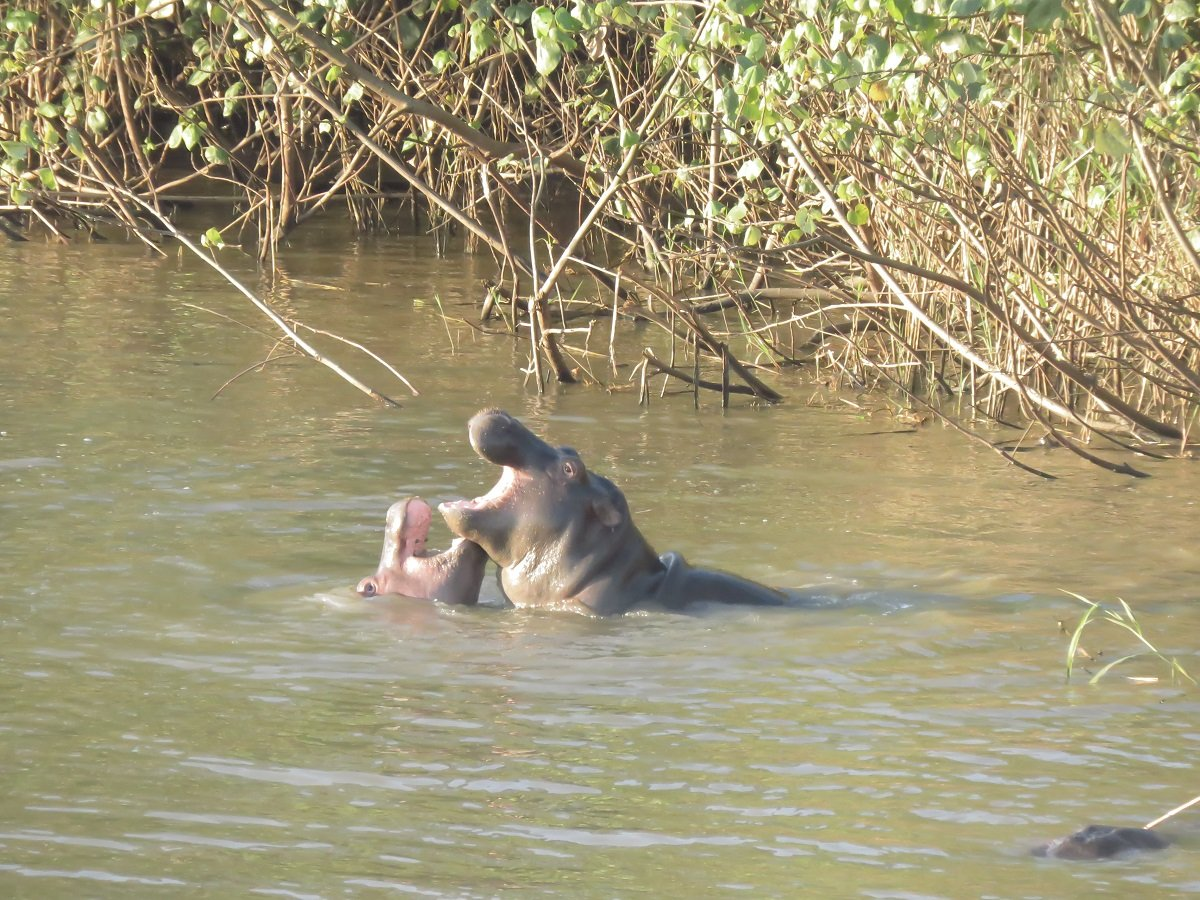
As the sun sets over the river, the only noise that breaks the silence is the snorting of the hippo's in the darkness. Walking back to our lodge we were on the lookout for hippos on the road. We had heard that the hippos do indeed get out of the river at night to graze on the lush green grass of front lawns and municipal patches and we remembered … they run faster than we do!
Day 3
Next morning we boarded one of the riverboats for a two hour trip on Lake St Lucia. We actually only covered a small section of the river close to the bridge and didn’t come near the lake and the greater wetlands area. Another place to visit again!
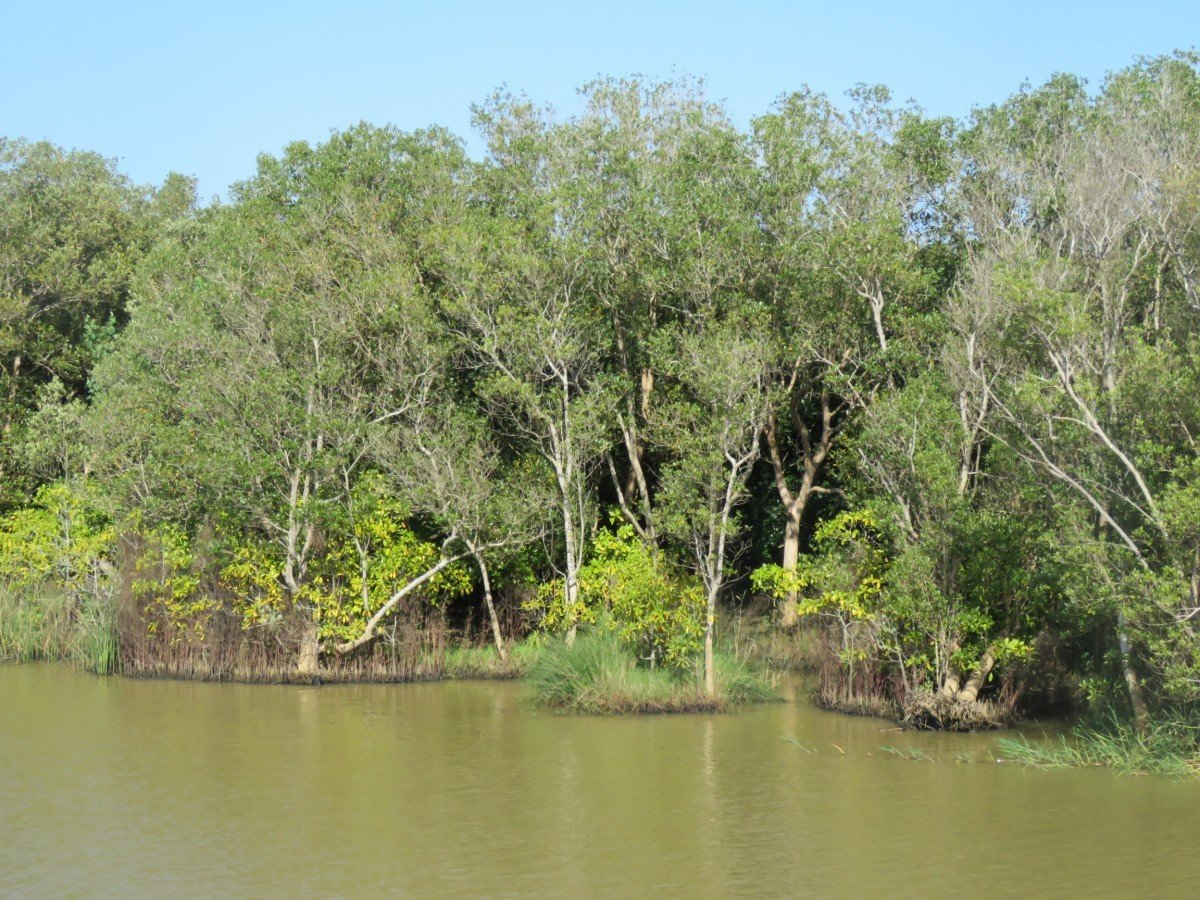
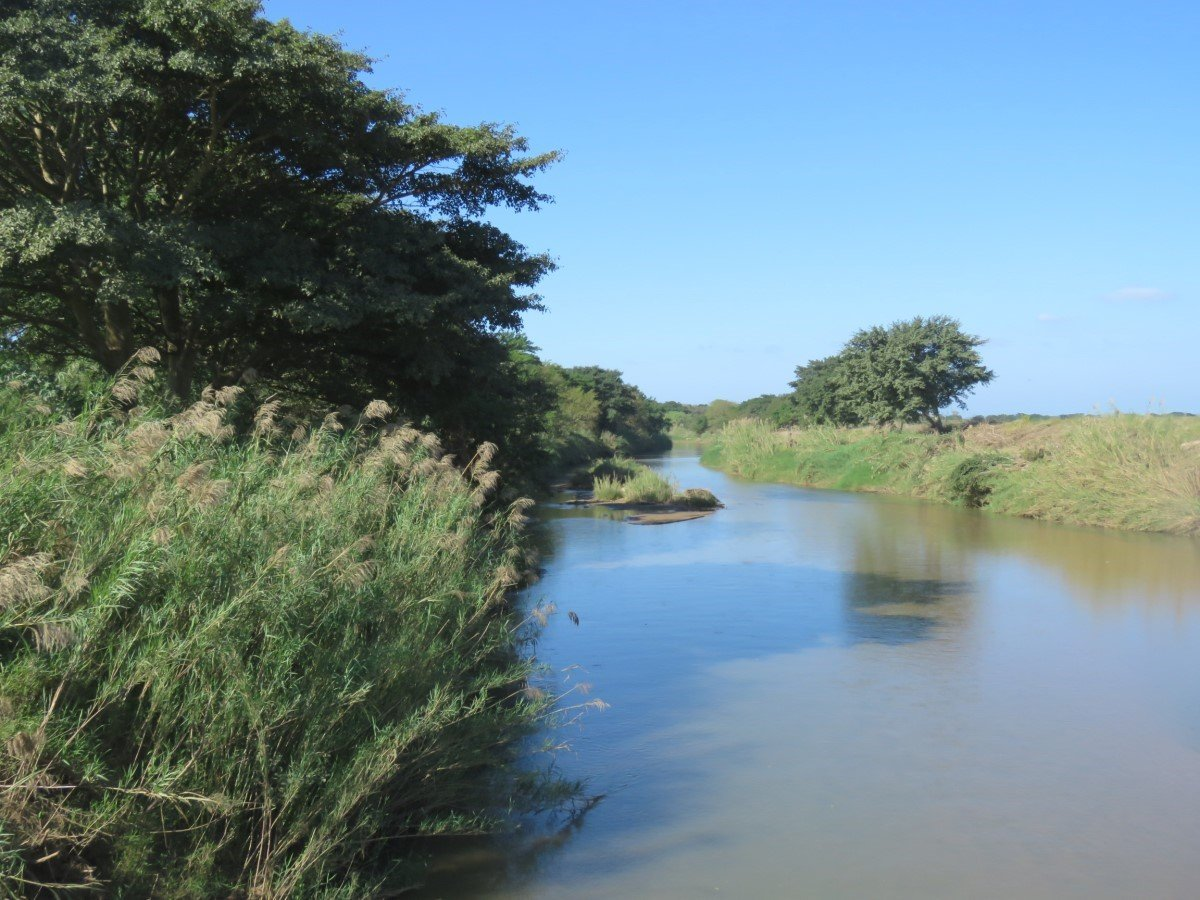
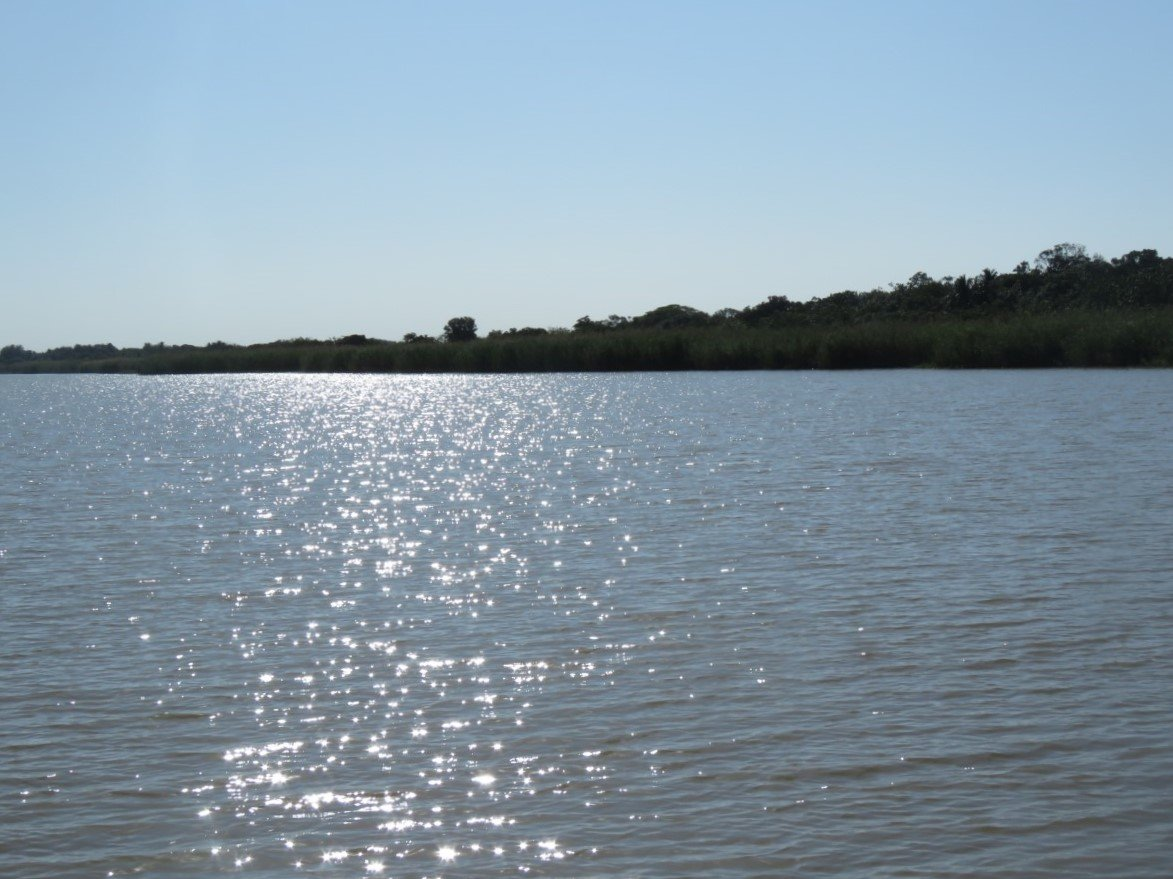
The river trip, however, was a feast for the eyes as the river was populated with herds of hippo lazing in the sun, swimming and wrestling in the river or grazing on the banks.
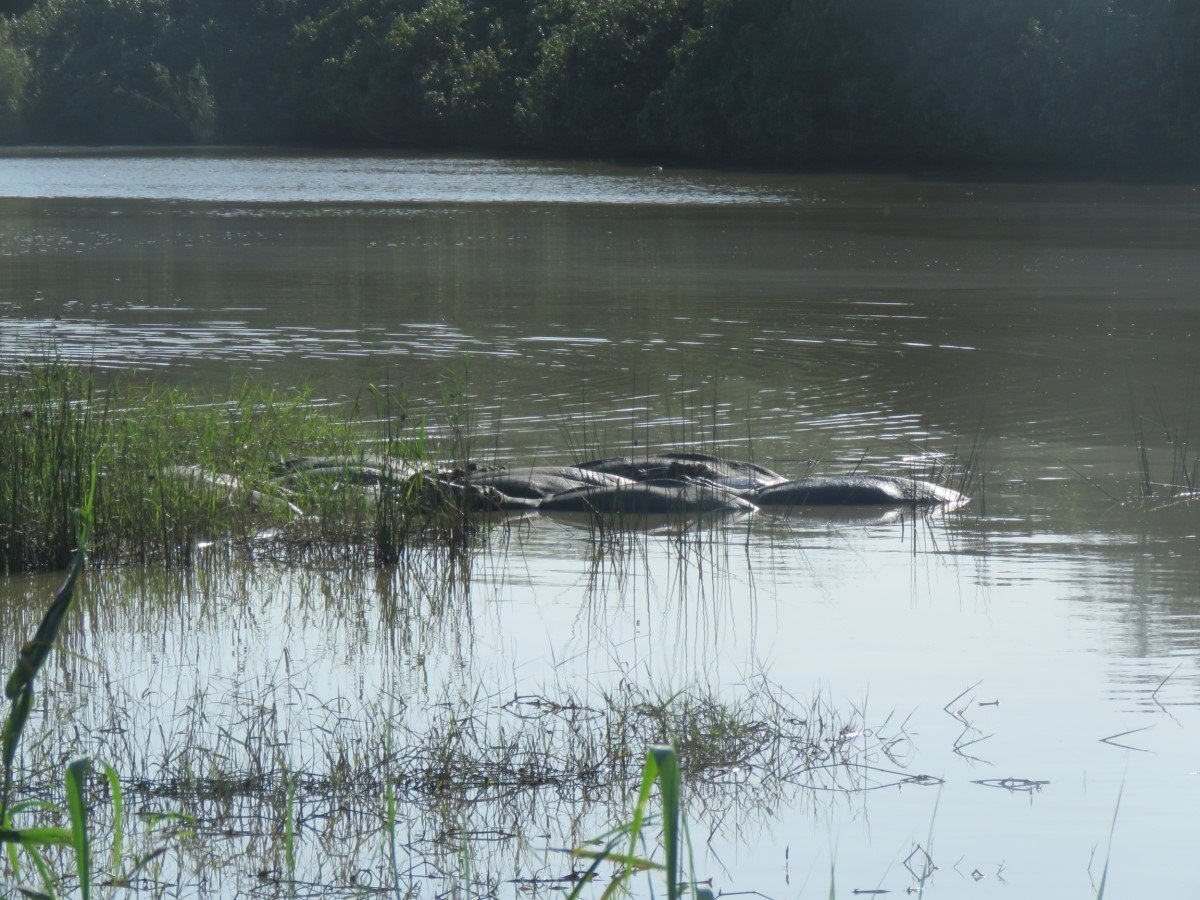
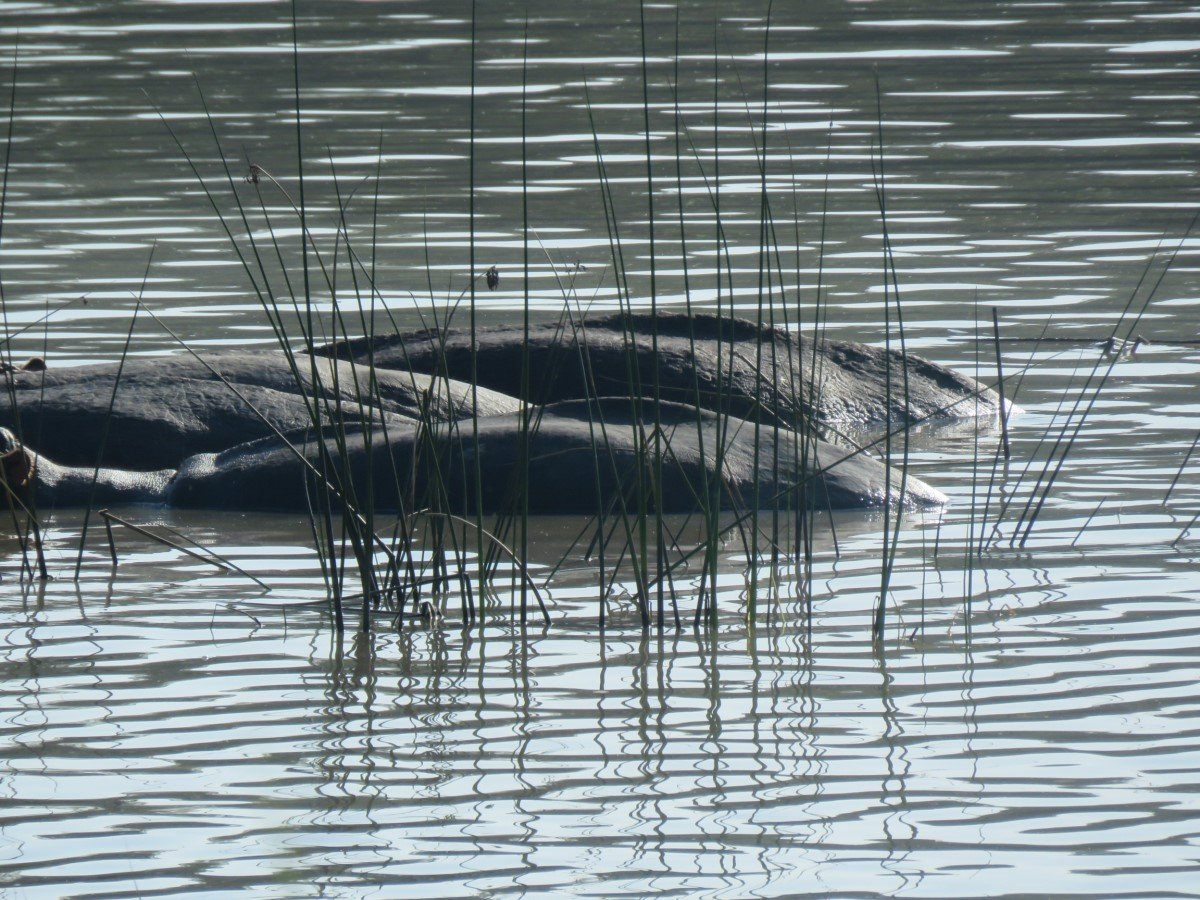
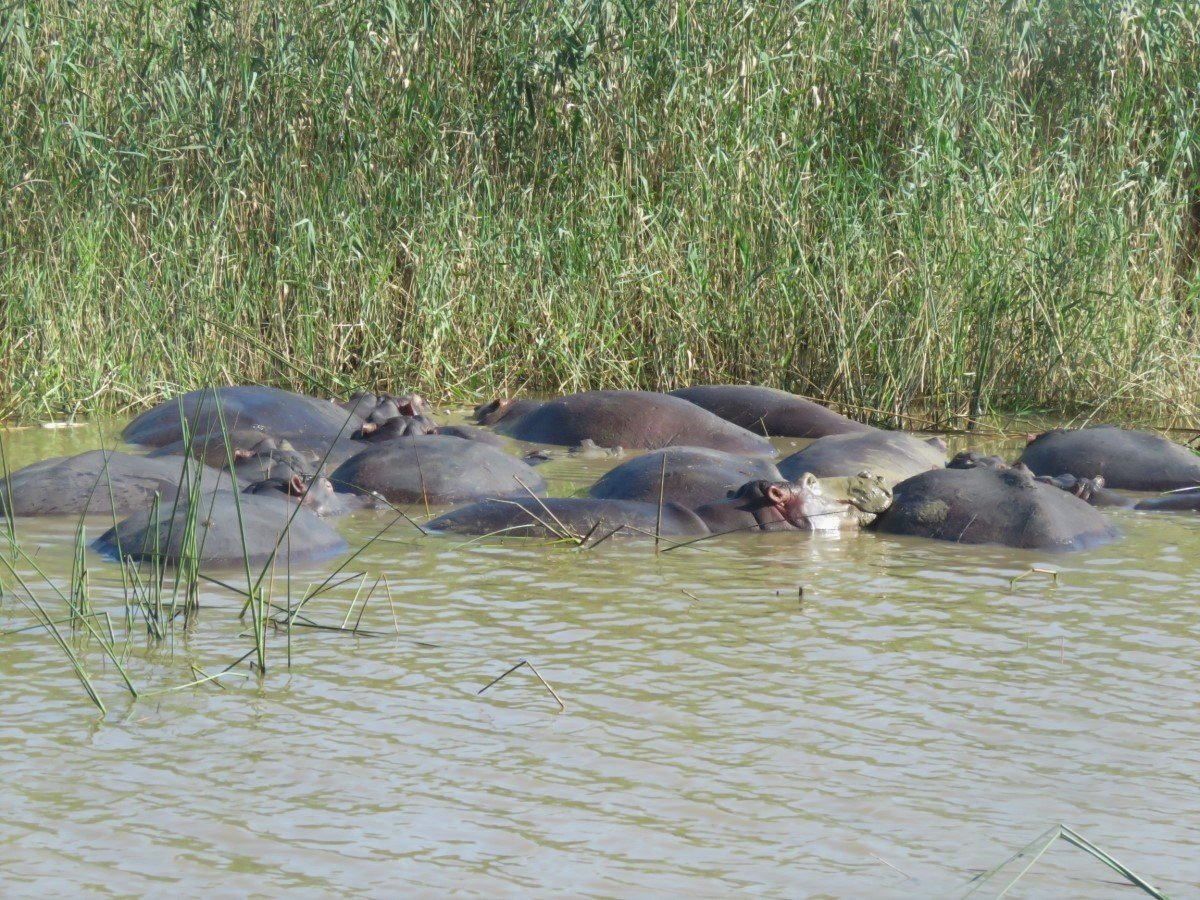
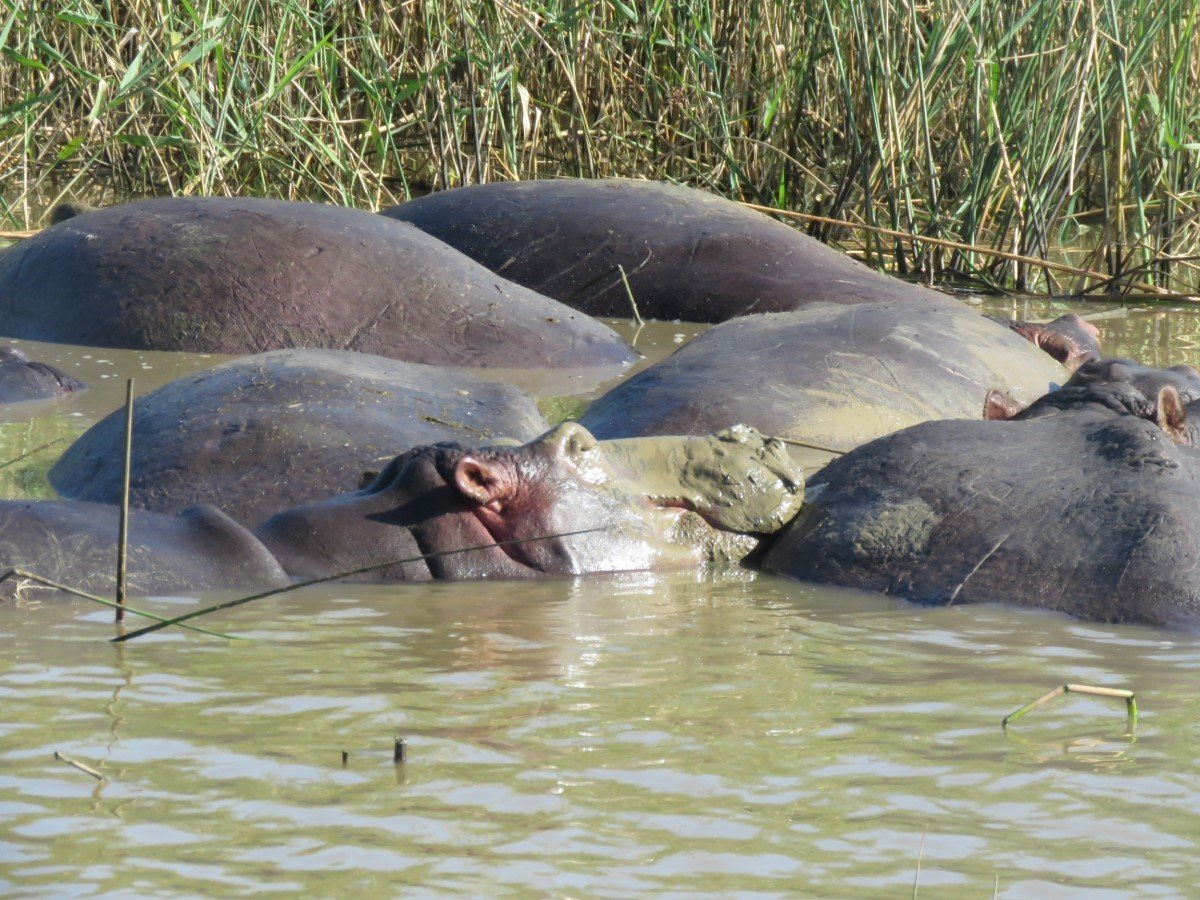
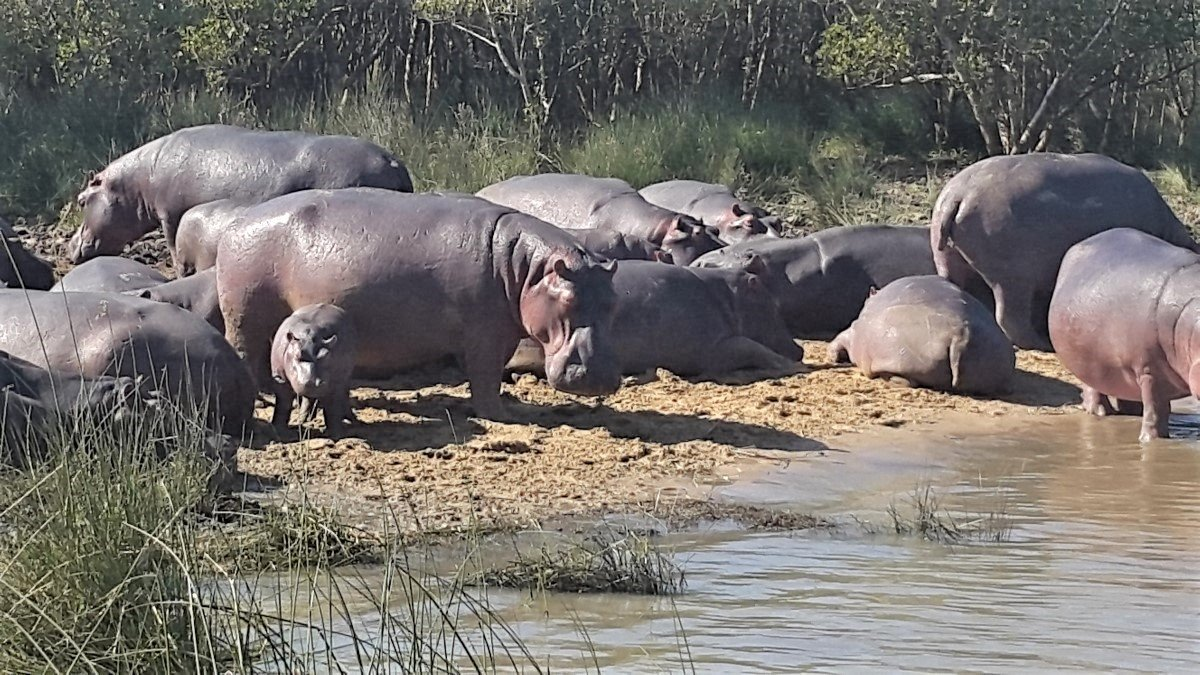
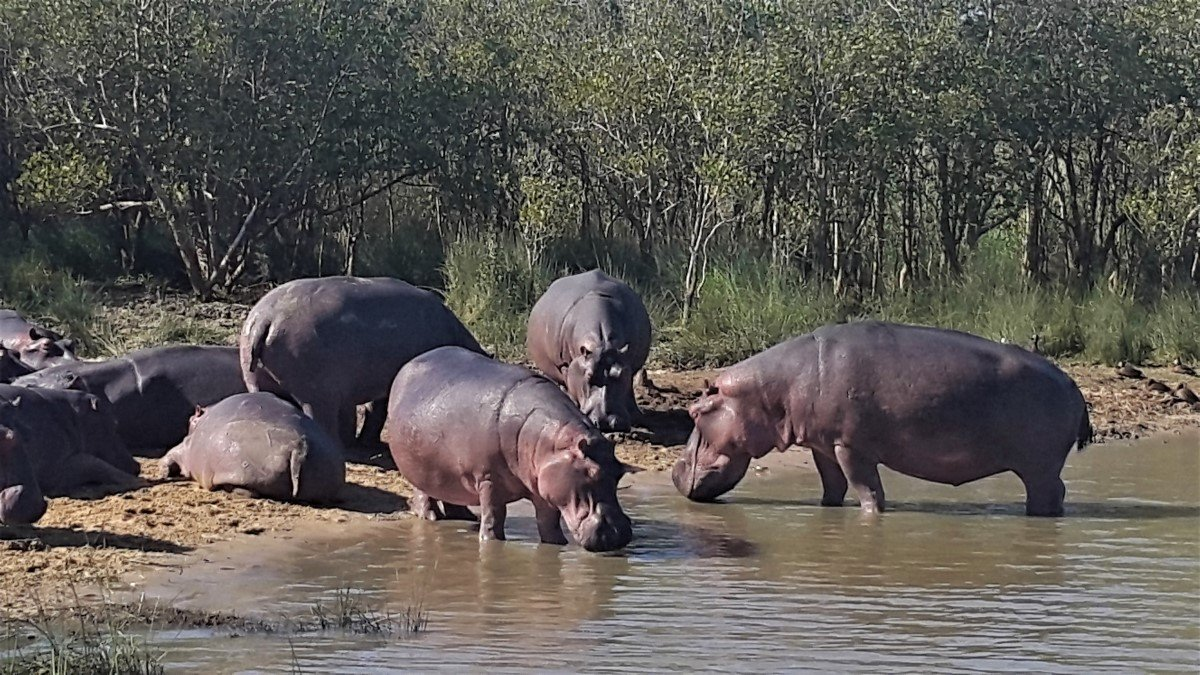
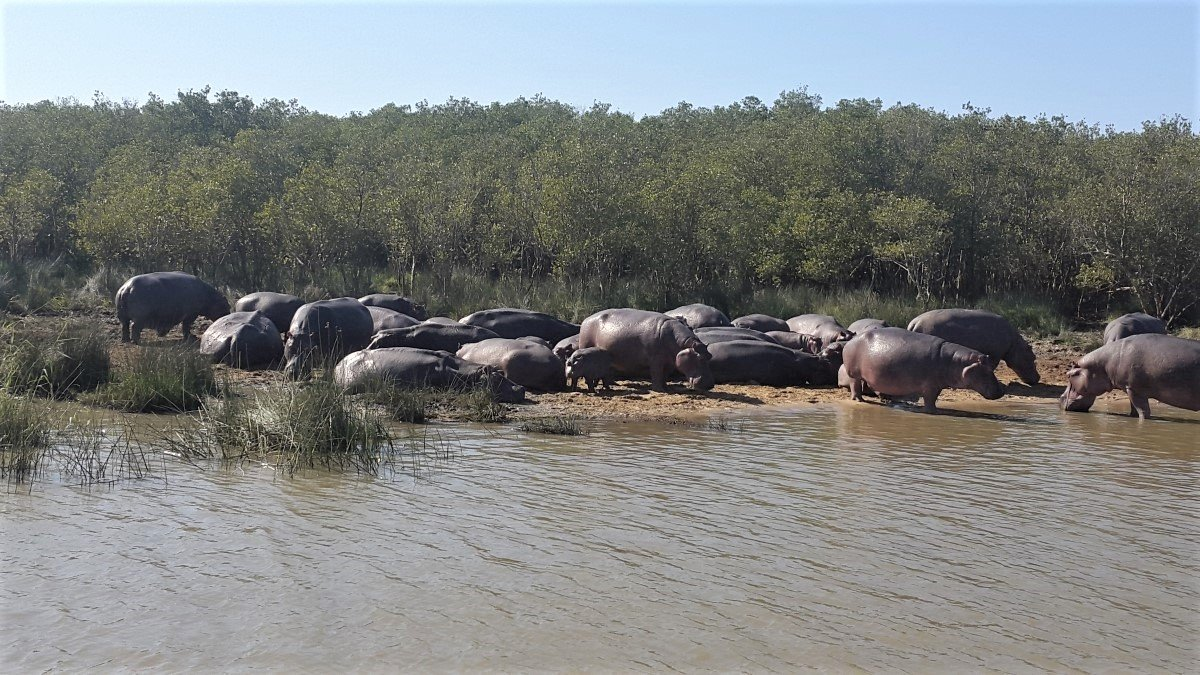
The previous evening we had noticed quite a big hippo hiding in the undergrowth on the other side of the river.
On the boat trip, our guide solved the mystery: it was a dead hippo, bloated from the build up of gasses.
During the night, the carcass had gotten detached from the bush and had drifted to the middle of the river. When we passed it, we saw crocodiles tugging and snapping in the hope of getting a bite to eat. They are ever vigilant and on the lookout for an unexpected supper.
The hippos are not the only inhabitants of the river. They share their habitat with an abundance of bird species, monkeys, crocodiles and more.
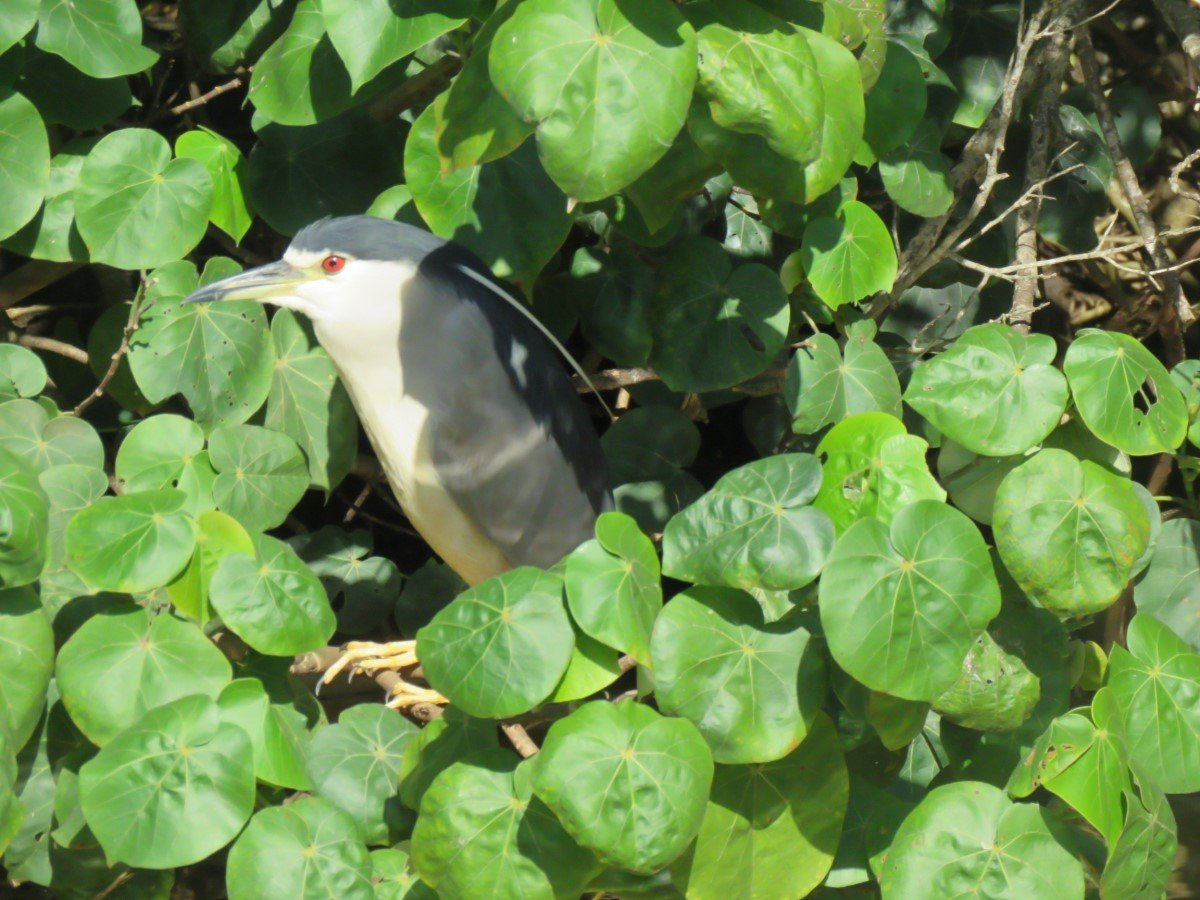
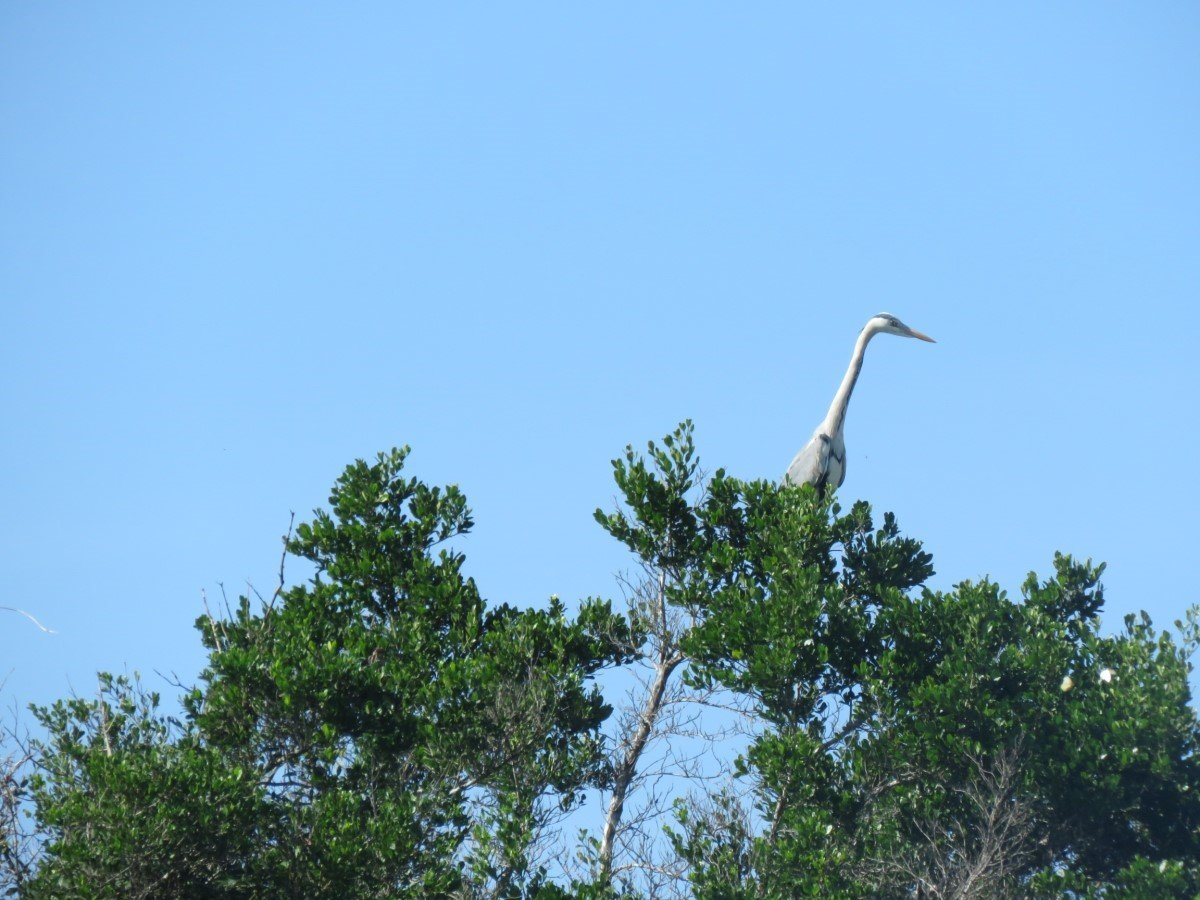
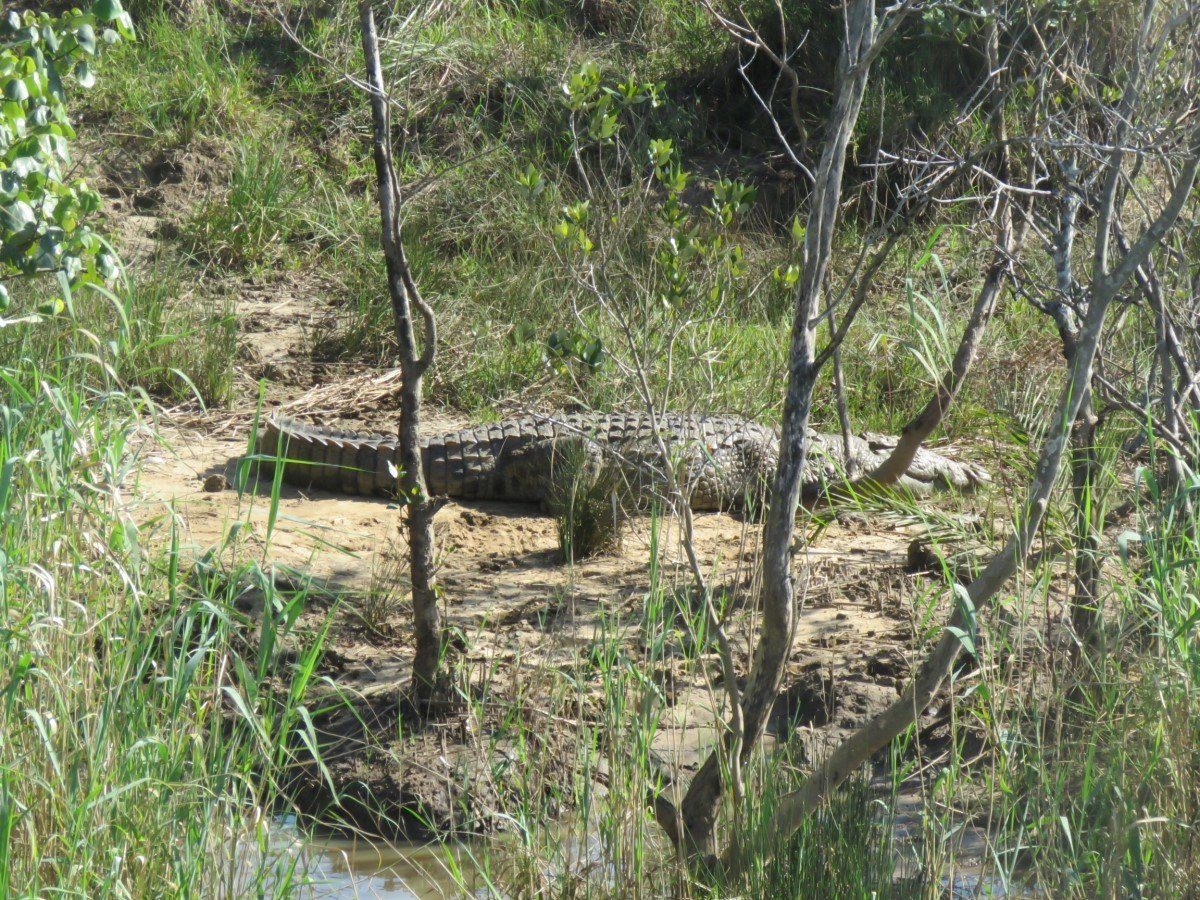
Our time was limited once again and early afternoon we drove back to Shaka Zulu International Airport to catch our flight back to Johannesburg.
For more photos, clips and videos follow us on
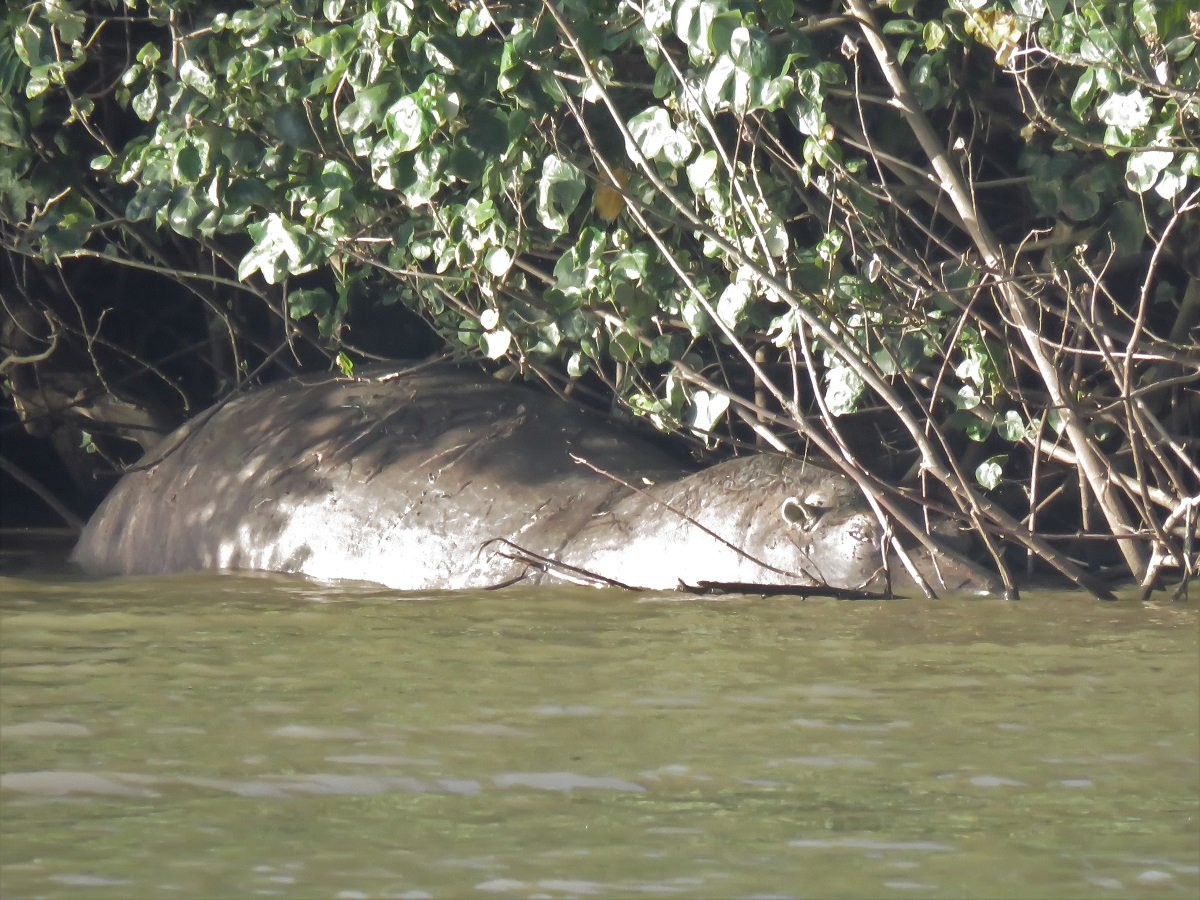
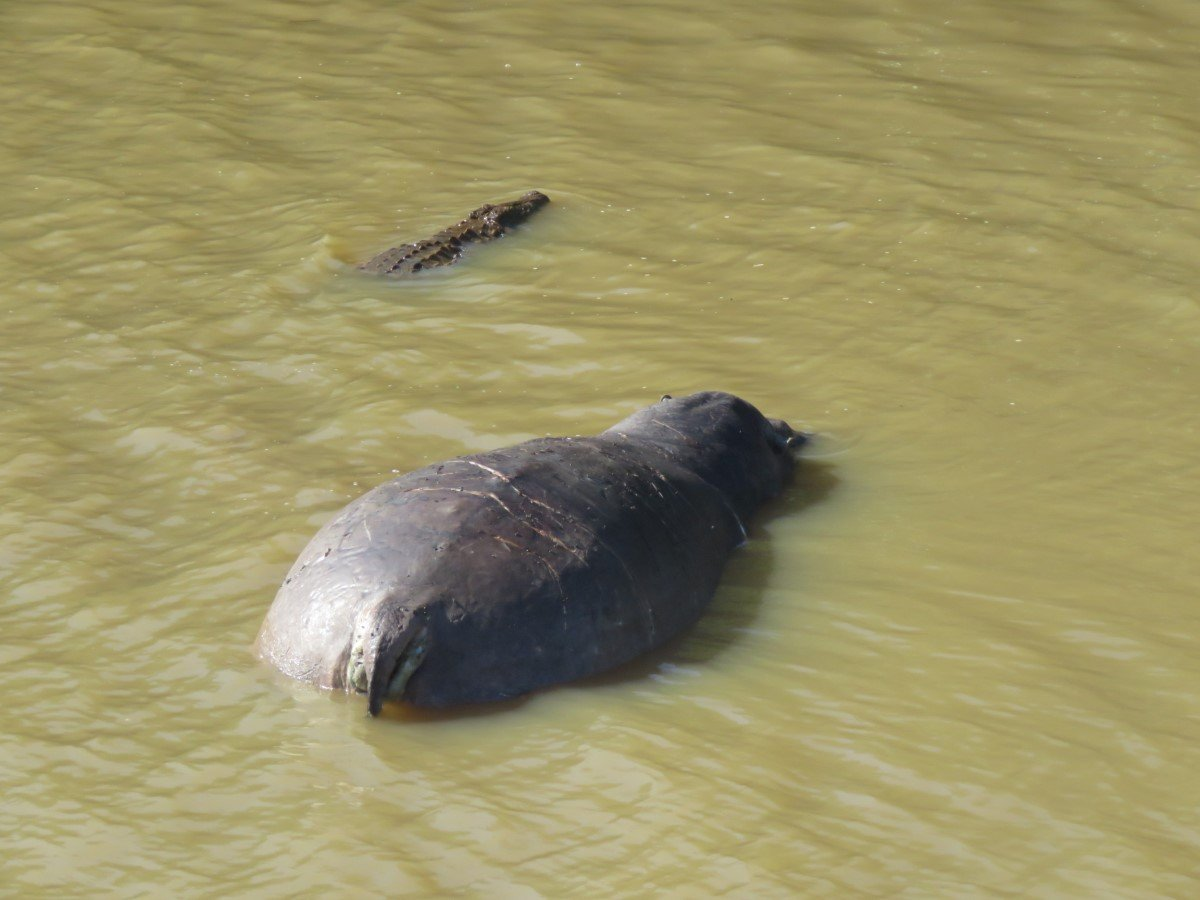


Kosi Bay and St Lucia